
The Project Gutenberg EBook of Worlds Within Worlds: The Story of Nuclear
Energy, Volume 3 (of 3), by Isaac Asimov
This eBook is for the use of anyone anywhere in the United States and most
other parts of the world at no cost and with almost no restrictions
whatsoever. You may copy it, give it away or re-use it under the terms of
the Project Gutenberg License included with this eBook or online at
www.gutenberg.org. If you are not located in the United States, you'll have
to check the laws of the country where you are located before using this ebook.
Title: Worlds Within Worlds: The Story of Nuclear Energy, Volume 3 (of 3)
Nuclear Fission; Nuclear Fusion; Beyond Fusion
Author: Isaac Asimov
Release Date: August 30, 2015 [EBook #49821]
Language: English
Character set encoding: UTF-8
*** START OF THIS PROJECT GUTENBERG EBOOK WORLDS WITHIN WORLDS, VOL 3 ***
Produced by Stephen Hutcheson, Dave Morgan and the Online
Distributed Proofreading Team at http://www.pgdp.net

by Isaac Asimov
United States Atomic Energy Commission
Office of Information Services
Library of Congress Catalog Card Number 75-189477
1972
Nothing in the history of mankind has opened our eyes to the possibilities of science as has the development of atomic power. In the last 200 years, people have seen the coming of the steam engine, the steamboat, the railroad locomotive, the automobile, the airplane, radio, motion pictures, television, the machine age in general. Yet none of it seemed quite so fantastic, quite so unbelievable, as what man has done since 1939 with the atom ... there seem to be almost no limits to what may lie ahead: inexhaustible energy, new worlds, ever-widening knowledge of the physical universe. Isaac Asimov
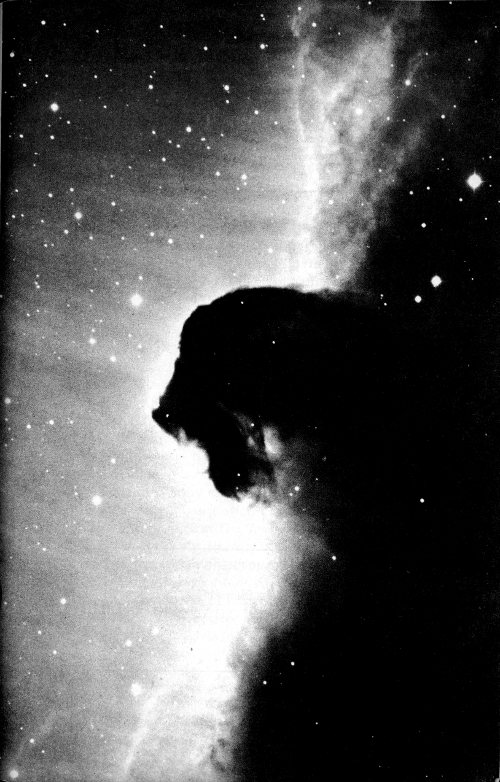
Nuclear energy is playing a vital role in the life of every man, woman, and child in the United States today. In the years ahead it will affect increasingly all the peoples of the earth. It is essential that all Americans gain an understanding of this vital force if they are to discharge thoughtfully their responsibilities as citizens and if they are to realize fully the myriad benefits that nuclear energy offers them.
The United States Atomic Energy Commission provides this booklet to help you achieve such understanding.
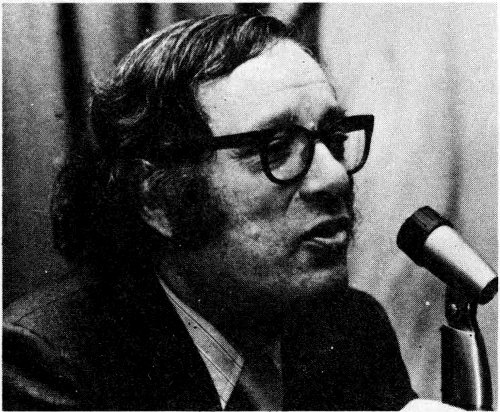
ISAAC ASIMOV received his academic degrees from Columbia University and is Associate Professor of Biochemistry at the Boston University School of Medicine. He is a prolific author who has written over 100 books in the past 18 years, including about 20 science fiction works, and books for children. His many excellent science books for the public cover subjects in mathematics, physics, astronomy, chemistry, and biology, such as The Genetic Code, Inside the Atom, Building Blocks of the Universe, Understanding Physics, The New Intelligent Man’s Guide to Science, and Asimov’s Biographical Encyclopedia of Science and Technology. In 1965 Dr. Asimov received the James T. Grady Award of the American Chemical Society for his major contribution in reporting science progress to the public.
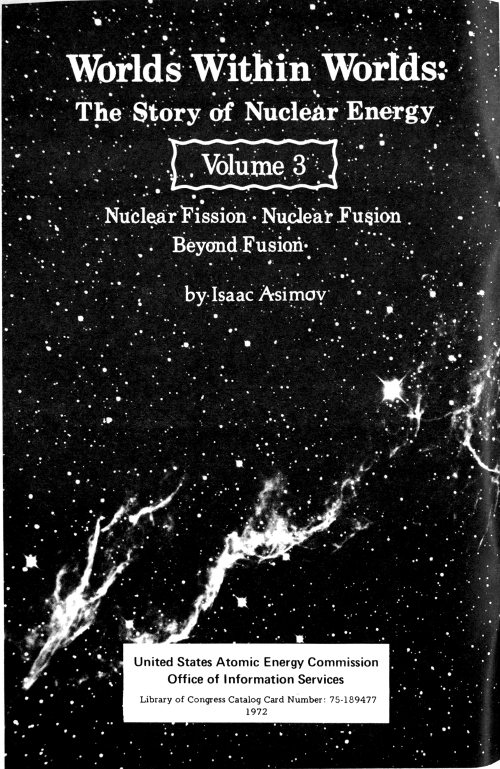
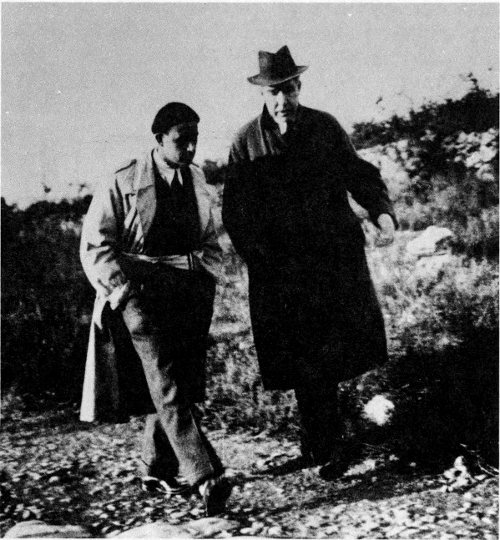
Enrico Fermi (left) and Niels Bohr discuss physics as they stroll along the Appian Way outside Rome in 1931.
In 1934 Enrico Fermi began his first experiments involving the bombardment of uranium with neutrons—experiments that were to change the face of the world.
Fermi had found that slow neutrons, which had very little energy, were easily absorbed by atomic nuclei—more easily than fast neutrons were absorbed, and certainly more easily than charged particles were.
Often what happened was that the neutron was simply absorbed by the nucleus. Since the neutron has a mass number of 1 and an atomic number of 0 (because it is uncharged), a nucleus that absorbs a neutron remains an isotope of the same element, but increases its mass number.
For instance, suppose that neutrons are used to bombard hydrogen-1, which then captures one of the neutrons. From a single proton, it will become a proton plus a neutron; from hydrogen-1, it will become hydrogen-2. A new nucleus formed in this way will be at a higher energy and that energy is emitted in the form of a gamma ray.
Sometimes the more massive isotope that is formed through neutron absorption is stable, as hydrogen-2 is. Sometimes it is not, but is radioactive instead. Because it has added a neutron, it has too many neutrons for stability. The best way of adjusting the matter is to emit a beta particle (electron). This converts one of the neutrons into a proton. The mass number stays the same but the atomic number increases by one.
The element rhodium, for example, which has an atomic number of 45, has only 1 stable isotope, with a mass number of 103. If rhodium-103 (45 protons, 58 neutrons) absorbs a neutron, it becomes rhodium-104 (45 protons, 59 neutrons), which is not stable. Rhodium-104 emits a beta particle, changing a neutron to a proton so that the nuclear combination becomes 46 protons and 58 neutrons. This is palladium-104, which is stable.
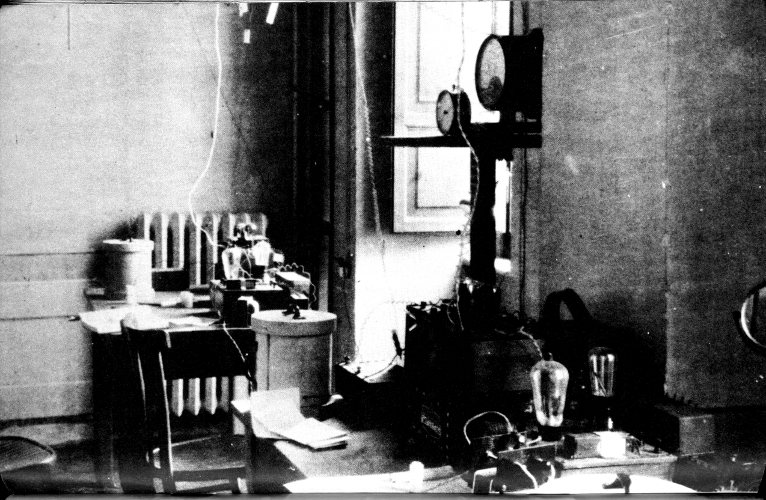
Fermi’s laboratory in Rome in 1930.
As another example, indium-115 (49 protons, 66 neutrons) absorbs a neutron and becomes indium-116 (49 protons, 67 neutrons), which gives off a beta particle and becomes tin-116 (50 protons, 66 neutrons), which is stable.
There are over 100 isotopes that will absorb neutrons and end by becoming an isotope of an element one higher in the atomic number scale. Fermi observed a number of these cases.
Having done so, he was bound to ask what would happen if uranium were bombarded with neutrons. Would its isotopes also be raised in atomic number—in this case from 92 to 93? If that were so it would be very exciting, for uranium had the highest atomic number in the entire scale. Nobody had ever discovered any sample of element number 93, but perhaps it could be formed in the laboratory.
In 1934, therefore, Fermi bombarded uranium with neutrons in the hope of obtaining atoms of element 93. Neutrons were absorbed and whatever was formed did give off beta particles, so element 93 should be there. However, four different kinds of beta particles (different in their energy content) were given off and the matter grew very confusing. Fermi could not definitely identify the presence of atoms of element 93 and neither could anyone else for several years. Other things turned up, however, which were even more significant.
Before going on to these other things, however, it should be mentioned that undoubtedly element 93 was formed even though Fermi couldn’t clearly demonstrate the fact. In 1939 the American physicists Edwin Mattison McMillan (1907- ) and Philip Hauge Abelson (1913- ), after bombarding uranium atoms with slow neutrons, were able to identify element 93. Since uranium had originally been named for the planet, Uranus, the new element beyond uranium was eventually named for the planet Neptune, which lay beyond Uranus. Element 93 is therefore called “neptunium”.
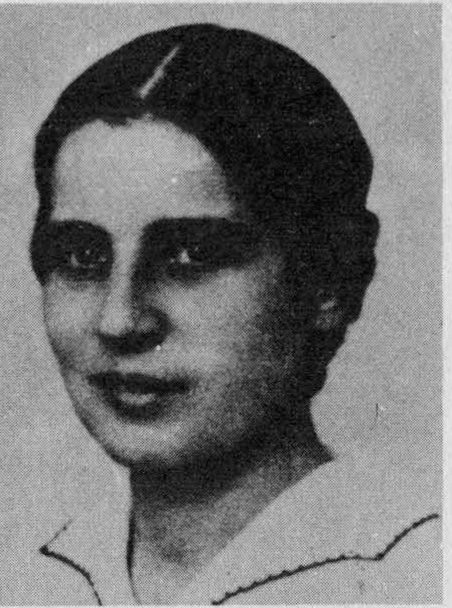
Lise Meitner
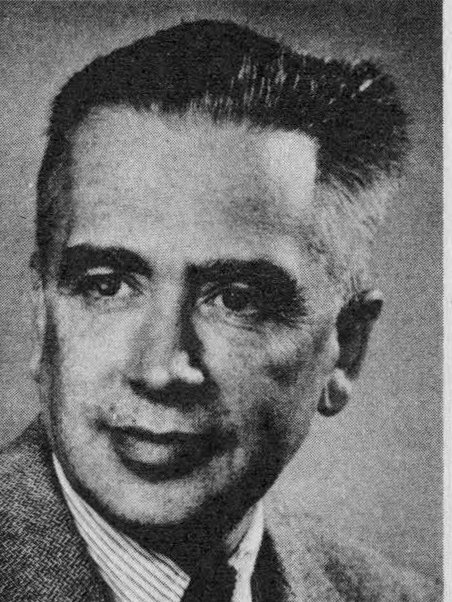
Emilio Segrè
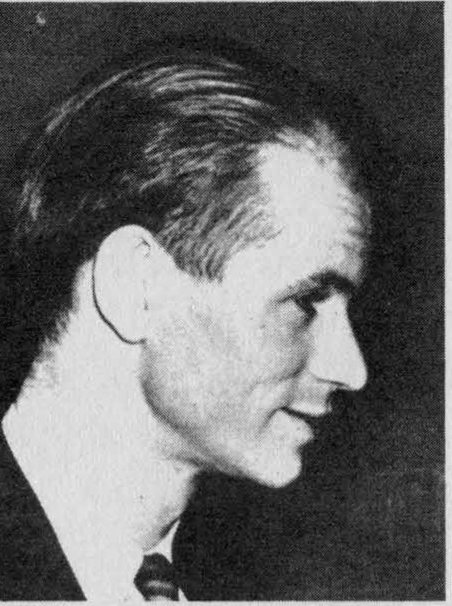
Edwin M. McMillan
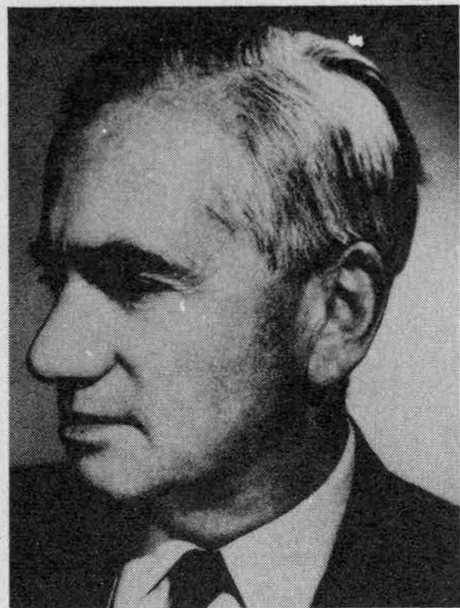
Otto R. Frisch
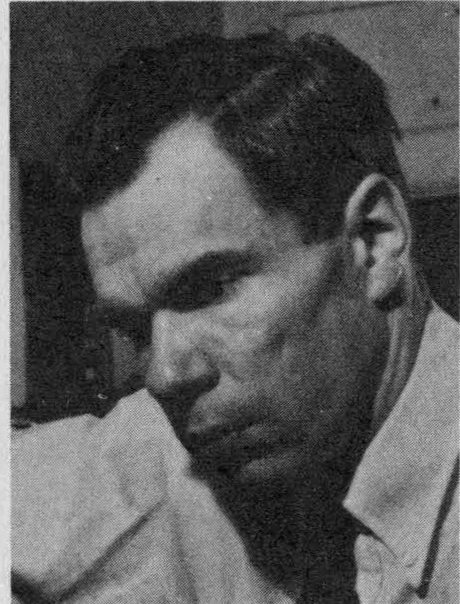
Glenn T. Seaborg
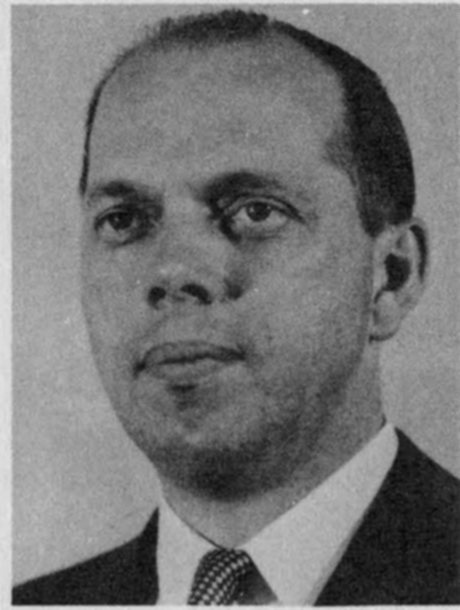
Philip H. Abelson
What happened was exactly what was expected. Uranium-238 (92 protons, 146 neutrons) added a neutron to become uranium-239 (92 protons, 147 neutrons), which emitted a beta particle to become neptunium-239 (93 protons, 146 neutrons).
In fact, neptunium-239 also emitted a beta particle so it ought to become an isotope of an element even higher in the atomic number scale. This one, element 94, was named “plutonium” after Pluto, the planet beyond Neptune. The isotope, plutonium-239, formed from neptunium-239, was only feebly radioactive, however, and it was not clearly identified until 1941.
The actual discovery of the element plutonium came the year before, however, when neptunium-238 was formed. It emitted a beta particle and became plutonium-238, an isotope that was radioactive enough to be easily detected and identified by Glenn Theodore Seaborg (1912- ), and his co-workers, who completed McMillan’s experiments when he was called away to other defense research.
Neptunium and plutonium were the first “transuranium elements” to be produced in the laboratory, but they weren’t the last. Over the next 30 years, isotopes were formed that contained more and more protons in the nucleus and therefore had higher and higher atomic numbers. At the moment of writing, isotopes of every element up to and including element 105 have been formed.
A number of these new elements have been named for some of the scientists important in the history of nuclear research. Element 96 is “curium”, named for Pierre and Marie Curie; element 99 is “einsteinium” for Albert Einstein; and element 100 is “fermium” for Enrico Fermi.
Element 101 is “mendelevium” for the Russian chemist Dmitri Mendeléev, who early in 1869 was the first to arrange the elements in a reasonable and useful order. Element 103 is “lawrencium” for Ernest O. Lawrence. “Rutherfordium” for Ernest Rutherford has been proposed for element 104.
And “hahnium” for Otto Hahn (1879-1968), a German physical chemist whose contribution we will come to shortly, has been proposed for element 105.
Neptunium, however, was not the first new element to be created in the laboratory. In the early 1930s, there were still 2 elements with fairly low atomic numbers that had never been discovered. These were the elements with atomic numbers 43 and 61.
In 1937, though, molybdenum (atomic number 42) had been bombarded with neutrons in Lawrence’s laboratory in the United States. It might contain small quantities of element 43 as a result. The Italian physicist Emilio Segrè (1905- ), who had worked with Fermi, obtained a sample of the bombarded molybdenum and indeed obtained indications of the presence of element 43. It was the first new element to be manufactured by artificial means and was called “technetium” from the Greek word for “artificial”.
The technetium isotope that was formed was radioactive. Indeed, all the technetium isotopes are radioactive. Element 61, discovered in 1945 and named “promethium”, also has no stable isotopes. Technetium and promethium are the only elements with atomic numbers less than 84 that do not have even a single stable isotope.
But let us get back to the bombardment of uranium with neutrons research that Fermi had begun. After he had reported his work, other physicists repeated it and also got a variety of beta particles and were also unable to decide what was going on.
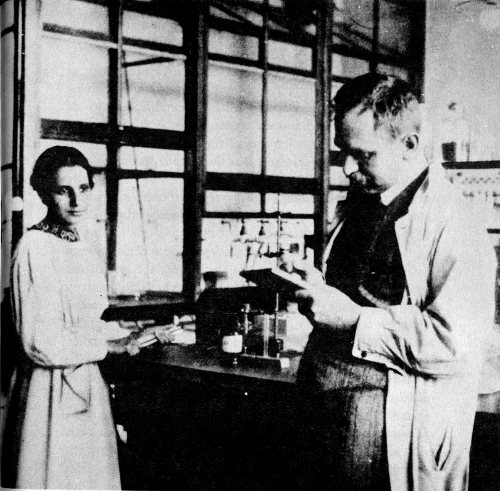
Lise Meitner and Otto Hahn in their laboratory in the 1930s.
One way to tackle the problem was to add to the system some stable element that was chemically similar to the tiny traces of radioactive isotopes that might be produced through the bombardment of uranium. Afterwards the stable element could probably be separated out of the mixture and the trace of radioactivity would, it was hoped, be carried along with it. The stable element would be a “carrier”.
Among those working on the problem were Otto Hahn and his Austrian co-worker, the physicist Lise Meitner 124 (1878-1968). Among the potential carriers they added to the system was the element, barium, which has an atomic number of 56. They found that a considerable quantity of the radioactivity did indeed accompany the barium when they separated that element out of the system.
A natural conclusion was that the isotopes producing the radioactivity belonged to an element that was chemically very similar to barium. Suspicion fell at once on radium (atomic number 88), which was very like barium indeed as far as chemical properties were concerned.
Lise Meitner, who was Jewish, found it difficult to work in Germany, however, for it was then under the rule of the strongly anti-Semitic Nazi regime. In March 1938 Germany occupied Austria, which became part of the German realm. Meitner was no longer protected by her Austrian citizenship and had to flee the country and go to Stockholm, Sweden. Hahn remained in Germany and continued working on the problem with the German physical chemist Fritz Strassman (1902- ).
Although the supposed radium, which possessed the radioactivity, was very like barium in chemical properties, the two were not entirely identical. There were ways of separating them, and Hahn and Strassman busied themselves in trying to accomplish this in order to isolate the radioactive isotopes, concentrate them, and study them in detail. Over and over again, however, they failed to separate the barium and the supposed radium.
Slowly, it began to seem to Hahn that the failure to separate the barium and the radioactivity meant that the isotopes to which the radioactivity belonged had to be so much like barium as to be nothing else but barium. He hesitated to say so, however, because it seemed unbelievable.
If the radioactive isotopes included radium, that was conceivable. Radium had an atomic number of 88, only four less than uranium’s 92. You could imagine that a neutron being absorbed by a uranium nucleus might make the latter 125 so unstable as to cause it to emit 2 alpha particles and become radium. Barium, however, had an atomic number of 56, only a little over half that of uranium. How could a uranium nucleus be made to turn into a barium nucleus unless it more or less broke in half? Nothing like that had ever been observed before and Hahn hesitated to suggest it.
While he was nerving himself to do so, however, Lise Meitner, in Stockholm, receiving reports of what was being done in Hahn’s laboratory and thinking about it, decided that unheard-of or not, there was only one explanation. The uranium nucleus was breaking in half.
Actually, when one stopped to think of it (after getting over the initial shock) it wasn’t so unbelievable at that. The nuclear force is so short-range, it barely reaches from end to end of a large nucleus like that of uranium. Left to itself, it holds together most of the time, but with the added energy of an entering neutron, we might imagine shock waves going through it and turning the nucleus into something like a quivering drop of liquid. Sometimes the uranium nucleus recovers, keeps the neutron, and then goes on to beta-particle emission. And sometimes the nucleus stretches to the point where the nuclear force doesn’t quite hold it together. It becomes a dumbbell shape and then the electromagnetic repulsion of the two halves (both positively charged) breaks it apart altogether.
It doesn’t break into equal halves. Nor does it always break at exactly the same place, so that there were a number of different fragments possible (which was why there was so much confusion). Still, one of the more common ways in which it might break would be into barium and krypton. (Their respective atomic numbers, 56 and 36, would add up to 92.)
Meitner and her nephew, Otto Robert Frisch (1904- ), who was in Copenhagen, Denmark, prepared a paper suggesting that this was what was happening. It was published in January 1939. Frisch passed it on to the Danish physicist 126 Niels Bohr (1885-1962) with whom he was working. The American biologist William Archibald Arnold (1904- ), who was also working in Copenhagen at the time, suggested that the splitting of the uranium nucleus into halves be called “fission”, the term used for the division-in-two of living cells. The name stuck.
In January 1939, just about the time Meitner and Frisch’s paper was published, Bohr had arrived in the United States to attend a conference of physicists. He carried the news of fission with him. The other physicists attending the conference heard the news and in a high state of excitement at once set about studying the problem. Within a matter of weeks, the fact of uranium fission was confirmed over and over.
One striking fact about uranium fission was the large amount of energy it released. In general, when a very massive nucleus is converted to a less massive one, energy is released because of the change in the mass defect, as Aston had shown in the 1920s. When the uranium nucleus breaks down through the ordinary radioactive processes to become a less massive lead nucleus, energy is given off accordingly. When, however, it breaks in two to become the much less massive nuclei of barium and krypton (or others in that neighborhood) much more energy is given off.
It quickly turned out that uranium fission gave off something like ten times as much nuclear energy per nucleus than did any other nuclear reaction known at the time.
Even so, the quantity of energy released by uranium fission was only a tiny fraction of the energy that went into the preparation of the neutrons used to bring about the fission, if each neutron that struck a uranium atom brought about a single fission of that 1 atom.
Under those conditions, Rutherford’s suspicion that mankind would never be able to tap nuclear energy probably still remained true. (He had been dead for 2 years at the time of the discovery of fission.)
However, those were not the conditions.
Earlier in this history, we discussed chain reactions involving chemical energy. A small bit of energy can ignite a chemical reaction that would produce more than enough energy to ignite a neighboring section of the system, which would in turn produce still more—and so on, and so on. In this way the flame of a single match could start a fire in a leaf that would burn down an entire forest, and the energy given off by the burning forest would be enormously higher than the initial energy of the match flame.
Might there not be such a thing as a “nuclear chain reaction”? Could one initiate a nuclear reaction that would produce something that would initiate more of the same that would produce something that would initiate still more of the same and so on?
In that case, a nuclear reaction, once started, would continue of its own accord, and in return for the trifling investment that would serve to start it—a single neutron, perhaps—a vast amount of breakdowns would result with the delivery of a vast amount of energy. Even if it were necessary to expend quite a bit of energy to produce the 1 neutron that would start the chain reaction, one would end with an enormous profit.
What’s more, since the nuclear reaction would spread from nucleus to nucleus with millionths-of-a-second intervals, there would be, in a very brief time, so many nuclei breaking down that there would be a vast explosion. The explosion was sure to be millions of times as powerful as ordinary chemical explosions involving the same quantity of exploding material, since the latter used only the electromagnetic interaction, while the former used the much stronger nuclear interaction.
The first to think seriously of such a nuclear chain reaction was the Hungarian physicist Leo Szilard (1898-1964). He was working in Germany in 1933 when Adolf Hitler came to power and, since he was Jewish, he felt it would be wise to leave Germany. He went to Great Britain and there, in 1934, he considered certain new types of nuclear reactions that had been discovered.
In these, it sometimes happened that a fast neutron might strike a nucleus with sufficient energy to cause it to emit 2 neutrons. In that way the nucleus, absorbing 1 neutron and emitting 2, would become a lighter isotope of the same element.
But what would happen if each of the 2 neutrons that emerged from the original target nucleus struck new nuclei and forced the emission of a pair of neutrons from each. There would now be a total of 4 neutrons flying about and if each struck new nuclei there would next be 8 neutrons and so on. From the initial investment of a single neutron there might soon be countless billions initiating nuclear reactions.
Szilard, fearing the inevitability of war and fearing further that the brutal leaders of Germany might seek and use such a nuclear chain reaction as a weapon in warfare, secretly applied for a patent on a device intending to make use of such a nuclear chain reaction. He hoped to turn it over to the British Government, which might then use its possession as a way of restraining the Nazis and keeping the peace.
However, it wouldn’t have worked. It took the impact of a very energetic neutron to bring about the emission of 2 neutrons. The neutrons that then emerged from the nucleus simply didn’t have enough energy to keep things going. (It was like trying to make wet wood catch fire.)
But what about uranium fission? Uranium fission was initiated by slow neutrons. What if uranium fission also produced neutrons as well as being initiated by a neutron? Would not the neutrons produced serve to initiate new 129 fissions that would produce new neutrons and so on endlessly?
It seemed very likely that fission produced neutrons and indeed, Fermi, at the conference where fission was first discussed, suggested it at once. Massive nuclei possessed more neutrons per proton than less massive ones did. If a massive nucleus was broken up into 2 considerably less massive ones, there would be a surplus of neutrons. Suppose, for instance, uranium-238 broke down into barium-138 and krypton-86. Barium-138 contains 82 neutrons and krypton-86 50 neutrons for a total of 132. The uranium-238 nucleus, however, contains 146 neutrons.
The uranium fission process was studied at once to see if neutrons were actually given off and a number of different physicists, including Szilard, found that they were.
Now Szilard was faced with a nuclear chain reaction he was certain would work. Only slow neutrons were involved and the individual nuclear breakdowns were far more energetic than anything else that had yet been discovered. If a chain reaction could be started in a sizable piece of uranium, unimaginable quantities of energy would be produced. Just 1 gram of uranium, undergoing complete fission, would deliver the energy derived from the total burning of 3 tons of coal and would deliver that energy in a tiny fraction of a second.
Szilard, who had come to the United States in 1937, clearly visualized the tremendous explosive force of something that would have to be called a “nuclear bomb”. Szilard dreaded the possibility that Hitler might obtain the use of such a bomb through the agency of Germany’s nuclear scientists.
Partly through Szilard’s efforts, physicists in the United States and in other Western nations opposed to Hitler began a program of voluntary secrecy in 1940, to avoid passing along any hints to Germany. What’s more, Szilard enlisted the services of two other Hungarian refugees, the physicists Eugene Paul Wigner (1902- ) and Edward Teller (1908- ) and all approached Einstein, who had also fled Germany and come to America.
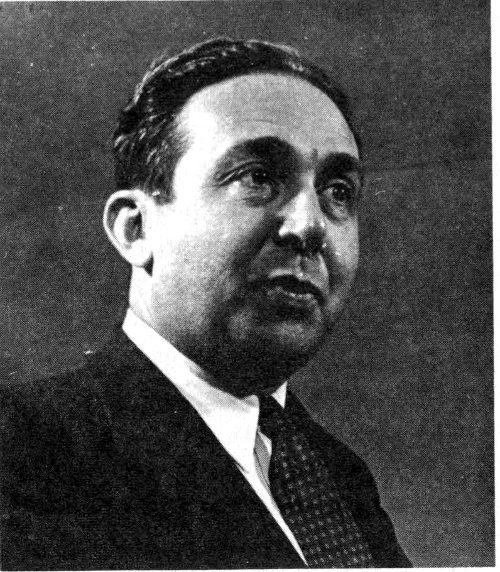
Leo Szilard
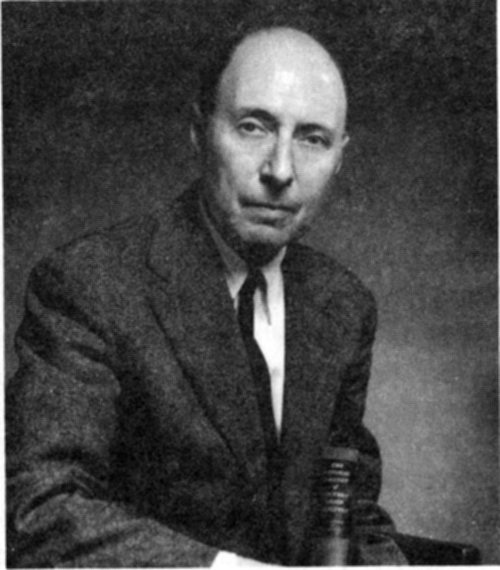
Eugene P. Wigner
Einstein was the most prestigious scientist then living and it was thought a letter from him to the President of the United States would be most persuasive. Einstein signed such a letter, which explained the possibility of a nuclear bomb and urged that the United States not allow a potential enemy to come into possession of it first.
Largely as a result of this letter, a huge research team was put together in the United States, to which other Western nations also contributed, with but one aim—to develop the nuclear bomb.
Although the theory of the nuclear bomb seemed clear and simple, a great many practical difficulties stood in the way. In the first place, if only uranium atoms underwent fission a supply of uranium had at least to be obtained in pure form, for if the neutrons struck nuclei of elements other than uranium, they would simply be absorbed and removed from the system, ending the possibility of a chain reaction. This alone was a heavy task, since there had been so little use for uranium in quantity that there was almost no supply in existence and no experience in how to purify it.
Secondly, the supply of uranium might have to be a large one, for neutrons didn’t necessarily enter the first uranium atom they approached. They moved about here and there, making glancing collisions, and travelling quite a distance, perhaps, before striking head-on and entering a nucleus. If in that time they had passed outside the lump of uranium, they were useless.
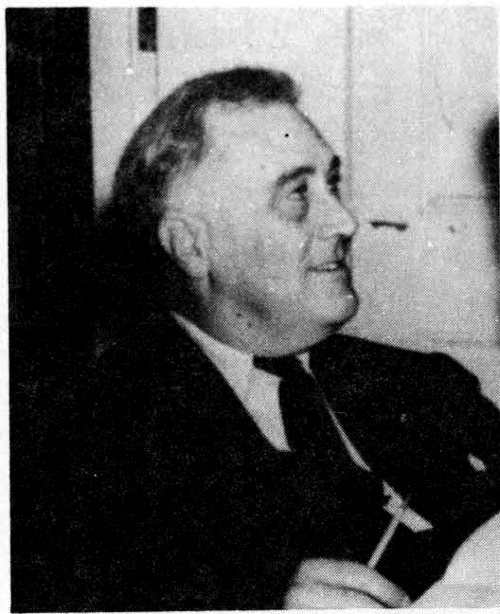
Franklin D. Roosevelt
- Albert Einstein
- Old Grove Rd.
- Nassau Point
- Peconic, Long Island
- August 2nd, 1939
- F.D. Roosevelt,
- President of the United States,
- White House
- Washington, D.C.
Sir:
Some recent work by E. Fermi and L. Szilard, which has been communicated to me in manuscript, leads me to expect that the element uranium may be turned into a new and important source of energy in the immediate future. Certain aspects of the situation which has arisen seem to call for watchfulness and, if necessary, quick action on the part of the Administration. I believe therefore that it is my duty to bring to your attention the following facts and recommendations:
In the course of the last four months it has been made probable—through the work of Joliot in France as well as Fermi and Szilard in America—that it may become possible to set up a nuclear chain reaction in a large mass of uranium, by which vast amounts of power and large quantities of new radium-like elements would be generated. Now it appears almost certain that this could be achieved in the immediate future.
This new phenomenon would also lead to the construction of bombs, and it is conceivable—though much less certain—that extremely powerful bombs of a new type may thus be constructed. A single bomb of this type, carried by boat and exploded in a port, might very well destroy the whole port together with some of the surrounding territory. However, such bombs might very well prove to be too heavy for transportation by air.
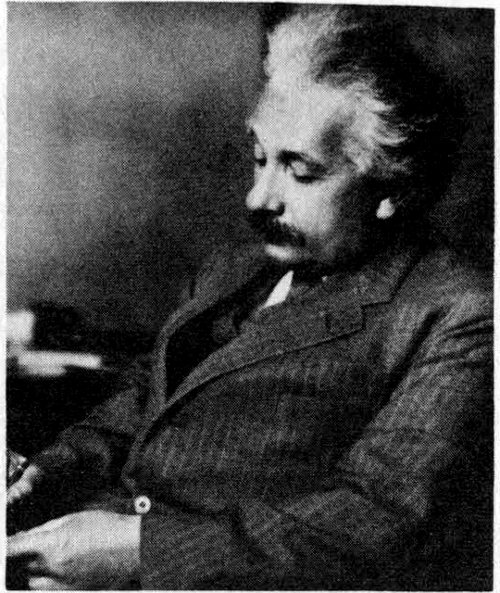
Albert Einstein
The United States has only very poor ores of uranium in moderate quantities. There is some good ore in Canada and the former Czechoslovakia, while the most important source of uranium is Belgian Congo.
In view of this situation you may think it desirable to have some permanent contact maintained between the Administration and the group of physicists working on chain reactions in America. One possible way of achieving this might be for you to entrust with this task a person who has your confidence and who could perhaps serve in an inofficial capacity. His task might comprise the following:
a) to approach Government Departments, keep them informed of the further development, and put forward recommendations for Government action, giving particular attention to the problem of securing a supply of uranium ore for the United States;
b) to speed up the experimental work, which is at present being carried on within the limits of the budgets of University laboratories, by providing funds, if such funds be required, through his contacts with private persons who are willing to make contributions for this cause, and perhaps also by obtaining the co-operation of industrial laboratories which have the necessary equipment.
I understand that Germany has actually stopped the sale of uranium from the Czechoslovakian mines which she has taken over. That she should have taken such early action might perhaps be understood on the ground that the son of the German Under-Secretary of State, von Weizsäcker, is attached to the Kaiser-Wilhelm-Institut in Berlin where some of the American work on uranium is now being repeated.
Yours very truly,(Albert Einstein)
As the quantity of uranium within which the fission chain reaction was initiated grew larger, more and more of the neutrons produced found a mark and the fission reaction would die out more and more slowly. Finally, at some particular size—the “critical size”—the fission reaction did not die at all, but maintained itself, with enough of the neutrons produced finding their mark to keep the nuclear reaction proceeding at a steady rate. At any greater size the nuclear reaction would accelerate and there would be an explosion.
It wasn’t even necessary to send neutrons into the uranium to start the process. In 1941 the Russian physicist Georgii Nikolaevich Flerov (1913- ) found that every once in a while a uranium atom would undergo fission without the introduction of a neutron. Occasionally the random quivering of a nucleus would bring about a shape that the nuclear interaction could not bring back to normal and the nucleus would then break apart. In a gram of ordinary uranium, there is a nucleus undergoing such “spontaneous fission” every 2 minutes on the average. Therefore, enough uranium need only be brought together to surpass critical size and it will explode within seconds, for the first nucleus that undergoes spontaneous fission will start the chain reaction.
First estimates made it seem that the quantity of uranium needed to reach critical size was extraordinarily great. Fully 99.3% of the metal is uranium-238, however, and, as soon as fission was discovered, Bohr pointed out that there were theoretical reasons for supposing that it was the uranium-235 isotope (making up only 0.7% of the whole) that was the one undergoing fission. Investigation proved him right. Indeed, the uranium-238 nucleus tended to absorb slow neutrons without fission, and to go on to beta-particle production that formed isotopes of neptunium and plutonium. In this way uranium-238 actually interfered with the chain reaction.
In any quantity of uranium, the more uranium-235 present and the less uranium-238, the more easily the chain reaction would proceed and the lower the critical size needed. Vast efforts were therefore made to separate the 2 135 isotopes and prepare uranium with a higher than normal concentration of uranium-235 (“enriched uranium”).
Of course, there was no great desire for a fearful explosion to get out of hand while the chain reaction was being studied. Before any bomb could be constructed, the mechanism of the chain reaction would have to be studied. Could a chain reaction capable of producing energy (for useful purposes as well as for bombs) be established? To test this, a quantity of uranium was gathered in the hope that a controlled chain reaction of uranium fission could be established. For that purpose, control rods of a substance that would easily absorb neutrons and slow the chain reaction were used. The metal, cadmium, served admirably for this purpose.
Then, too, the neutrons released by fission were pretty energetic. They tended to travel too far too soon and get outside the lump of uranium too easily. To produce a chain reaction that could be studied with some safety, the presence of a moderator was needed. This was a supply of small nuclei that did not absorb neutrons readily, but absorbed some of the energy of collision and slowed down any neutron that struck it. Nuclei such as hydrogen-2, beryllium-9, or carbon-12 were useful moderators. When the neutrons produced by fission were slowed, they travelled a smaller distance before being absorbed in their turn and the critical size would again be reduced.
Toward the end of 1942 the initial stage of the project reached a climax. Blocks of graphite containing uranium metal and uranium oxide were piled up in huge quantities (enriched uranium was not yet available) in order to approach critical size. This took place under the stands of a football stadium at the University of Chicago, with Enrico Fermi (who had come to the United States in 1938) in charge.[1]
The large structure was called an “atomic pile” at first because of the blocks of graphite being piled up. The proper name for such a device, and the one that was eventually adopted, was, however, “nuclear reactor”.
On December 2, 1942, calculations showed that the nuclear reactor was large enough to have reached critical size. The only thing preventing the chain reaction from sustaining itself was the cadmium rods that were inserted here and there in the pile and that were soaking up neutrons.
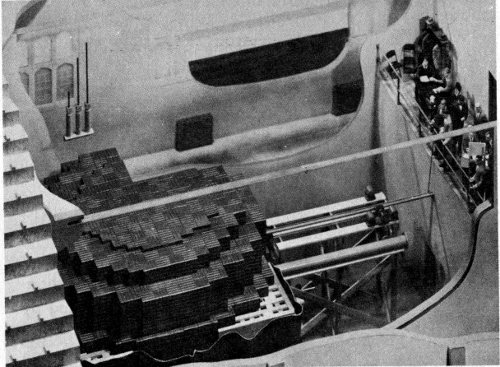
Cutaway model of the West Stands of Stagg Field showing the first pile in the squash court beneath it.
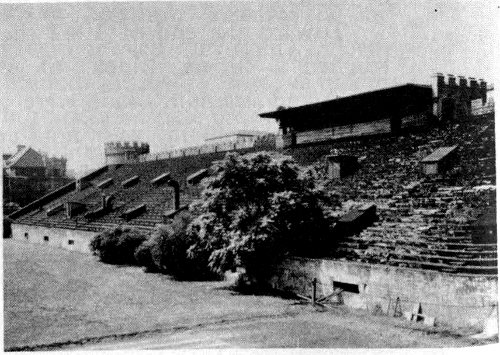
The exterior of the building.
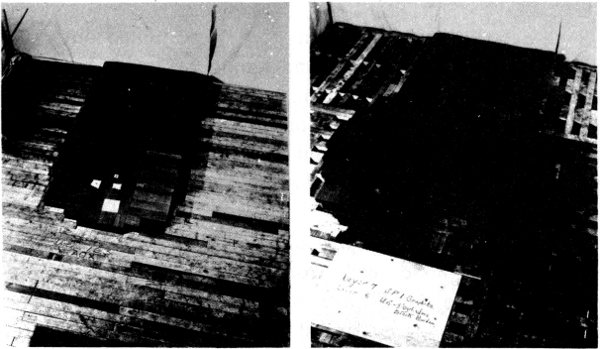
Graphite layers form the base of the pile, left. On the right is the seventh layer of graphite and edges of the sixth layer containing 3¼-inch pseudospheres of black uranium oxide. Beginning with layer 6, alternate courses of graphite containing uranium metal and/or uranium oxide fuel were separated by layers of solid graphite blocks.
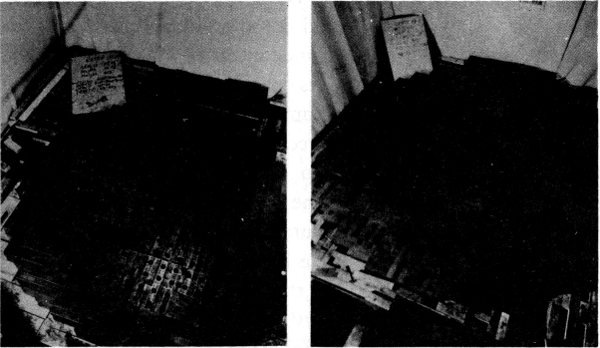
Tenth layer of graphite blocks containing pseudospheres of black and brown uranium oxide. The brown briquets, slightly richer in uranium, were concentrated in the central area. On the right is the nineteenth layer of graphite covering layer 18 containing slugs of uranium oxide.
One by one the cadmium rods were pulled out. The number of uranium atoms undergoing fission each second rose and, finally, at 3:45 p.m., the uranium fission became self-sustaining. It kept going on its own (with the cadmium rods ready to be pushed in if it looked as though it were getting out of hand—something calculations showed was not likely).
News of this success was announced to Washington by a cautious telephone call from Arthur Holly Compton (1892-1962) to James Bryant Conant (1893- ). “The Italian navigator has landed in the new world”, said Compton. Conant asked, “How were the natives?”, and the answer was, “Very friendly”.
This was the day and moment when the world entered the “nuclear age”. For the first time, mankind had constructed a device in which the nuclear energy being given off was greater than the energy poured in. Mankind had tapped the reservoirs of nuclear energy and could put it to use. Had Rutherford lived but 6 more years, he would have seen how wrong he was to think it could never be done.
The people of earth remained unaware of what had taken place in Chicago and physicists continued to work toward the development of the nuclear bomb.
Enriched uranium was successfully prepared. Critical sizes were brought low enough to make a nuclear bomb small enough to be carried by plane to some target. Suppose one had 2 slabs of enriched uranium, each below critical size, but which were above critical size if combined. And suppose an explosive device were added that, at some desired moment, could be set off in such a way that it would drive 1 slab of enriched uranium against the other. There would be an instant explosion of devastating power. Or suppose the enriched uranium were arranged in loosely packed pieces to begin with so that the flying neutrons were in open air too often to maintain the chain reaction. A properly arranged explosion might compress the uranium into a dense ball. Neutron absorption would become more efficient and again, an explosion would follow.
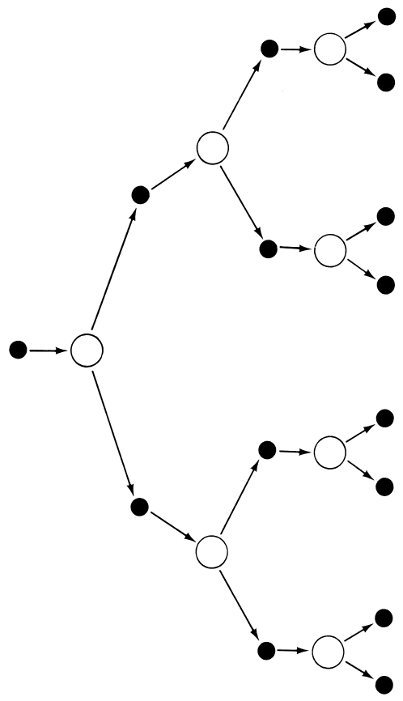
Nuclear Fission of Uranium: A neutron hits the nucleus of an atom of uranium. The neutron splits the nucleus into two parts and creates huge amounts of energy in the form of heat. At the same time other neutrons are released from the splitting nucleus and these continue the fission process in a chain reaction.
On July 16, 1945, a device that would result in a nuclear explosion was set up near Alamogordo, New Mexico, with nervous physicists watching from a safe distance. It worked perfectly; the explosion was tremendous.
By that time Nazi Germany had been defeated, but Japan was still fighting. Two more devices were prepared. After a warning, one was exploded over the Japanese city of Hiroshima on August 6, 1945, and the other over Nagasaki 2 days later. The Japanese government surrendered and World War II came to an end.
It was with the blast over Hiroshima that the world came to know it was in the nuclear age and that the ferocious weapon of the nuclear bomb existed. (The popular name for it at the time was “atomic bomb” or “A-bomb”.)
During the war, German scientists may have been trying to develop a nuclear bomb, but, if so, they had not yet succeeded at the time Germany met its final defeat. Soviet physicists, under Igor Vasilievich Kurchatov (1903-1960), were also working on the problem. The dislocation of the war, which inflicted much more damage on the Soviet Union than on the United States, kept the Soviet effort from succeeding while it was on. However, since the Soviets were among the victors, they were able to continue after the war.
In 1949 the Soviets exploded their first nuclear bomb. In 1952 the British did the same; in 1960, the French; and in 1964, the Chinese.
Although many nuclear bombs have been exploded for test purposes, the two over Hiroshima and Nagasaki have been the only ones used in time of war.
Nor need nuclear bombs be considered as having destructive potential only. There is the possibility that, with proper precautions, they might be used to make excavations, blast out harbors or canals, break up underground rock formations 141 to recover oil or other resources, and in other ways do the work of chemical explosives with far greater speed and economy. It has even been suggested that a series of nuclear bomb explosions might be used to hurl space vehicles forward in voyages away from earth.
The development of the nuclear chain reaction was not in the direction of bombs only. Nuclear reactors designed for the controlled production of useful energy multiplied in number and in efficiency since Fermi’s first “pile”. Many nations now possess them, and they are used for a variety of purposes.[2]
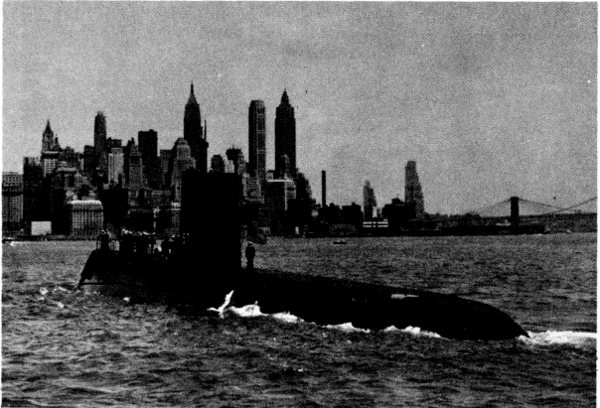
The USS Nautilus, the world’s first nuclear powered submarine, in New York harbor.
In 1954 the first nuclear submarine the USS Nautilus was launched by the United States. Its power was obtained 142 entirely from a nuclear reactor, and it was not necessary for it to rise to the surface at short intervals in order to recharge its batteries. Nuclear submarines have crossed the Arctic Ocean under the ice cover, and have circumnavigated the globe without surfacing.
In 1959 both the Soviet Union and the United States launched nuclear-powered surface vessels. The Soviet ship was the icebreaker, Lenin, and the American ship was a merchant vessel, the NS Savannah.
In the 1950s nuclear reactors were also used as the source of power for the production of electricity for civilian use. The Soviet Union built a small station of this sort in 1954, which had a capacity of 5,000 kilowatts. The British built one of 92,000 kilowatt capacity, which they called Calder Hall. The first American nuclear reactor for civilian use began operation at Shippingport, Pennsylvania, in 1958. It was the first really full-scale civilian nuclear power plant in the world.
The world appeared to have far greater sources of energy than had been expected. The “fossil fuels”—coal, oil and natural gas—were being used at such a rate that many speculated that the gas and oil would be gone in decades and the coal in centuries. Was it possible that uranium might now serve as a new source that would last indefinitely?
It was rather disappointing that it was uranium-235 which underwent fission, because that isotope made up only 0.7% of the uranium that existed. If uranium-235 were all we had and all we ever could have, the energy supply of the world would still be rather too limited.
There were other possible “nuclear fuels”, however. There was plutonium-239, which would also fission under neutron bombardment. It had an ordinary half-life (for a radioactive change in which it gave off alpha particles) of 24,300 years, which is long enough to make it easy to handle.
But how can plutonium-239 be formed in sufficient quantities to be useful? After all, it doesn’t occur in nature. Surprisingly, that turned out to be easy. Uranium-238 atoms 143 will absorb many of the neutrons that are constantly leaking out of the reactor and will become first neptunium-239 and then plutonium-239. The plutonium, being a different element from the uranium, can be separated from uranium and obtained in useful quantities.
Such a device is called a “breeder reactor” because it breeds fuel. Indeed, it can be so designed to produce more plutonium-239 than the uranium-235 it uses up, so that you actually end up with more nuclear fuel than you started with. In this way, all the uranium on earth (and not just uranium-235) can be considered potential nuclear fuel.
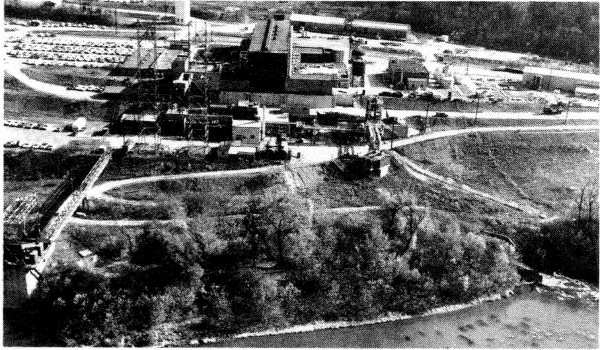
The Shippingport Atomic Power Station, the first full-scale, nuclear-electric station built exclusively for civilian needs, provides electricity for the homes and factories of the greater Pittsburgh area. The pressurized-water reactor, which now has a 90,000-net-electrical-kilowatt capacity, began commercial operation in 1957. The reactor is in the large building in the center.
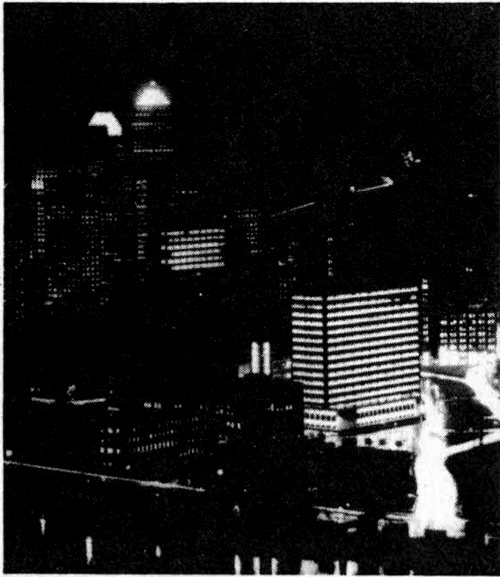
The lights of downtown Pittsburgh.
The first breeder reactor was completed at Arco, Idaho, in August 1951, and on December 20 produced the very first electricity on earth to come from nuclear power. Nevertheless, 144 breeder reactors for commercial use are still a matter for the future.[3]
Another isotope capable of fissioning under neutron bombardment is uranium-233. It does not occur in nature, but was formed in the laboratory by Seaborg and others in 1942. It has a half-life of 162,000 years. It can be formed from naturally occurring thorium-232. Thorium-232 will absorb a neutron to become thorium-233. Then 2 beta particles are given off so that the thorium-233 becomes first protactinium-233 and then uranium-233.
If a thorium shell surrounds a nuclear reactor, fissionable uranium-233 is formed within it and is easily separated from the thorium. In this way, thorium is also added to the list of earth’s potential nuclear fuels.[4]
If all the uranium and thorium in the earth’s crust (including the thin scattering of those elements through granite, for instance) were available for use, we might get up to 100 times as much energy from it as from all the coal and oil on the planet. Unfortunately, it is very unlikely that we will ever be able to make use of all the uranium and thorium. It is widely and thinly spread through the crustal rocks and much of it could not be extracted without using up more energy than would be supplied by it once isolated.
Another problem rests with the nature of the fission reaction. When the uranium-235 nucleus (or plutonium-239 or uranium-233) undergoes fission, it breaks up into any of a large number of middle-sized nuclei that are radioactive—much more intensely radioactive than the original fuel. (It was from among these “fission products” that isotopes of element 61 were first obtained in 1945. Coming from the nuclear fire, it reminded its discoverers of Prometheus, who stole fire from the sun in the Greek myths, and so it was called “promethium”.)
The fission products still contain energy and some of them can be used in lightweight “nuclear batteries”. Such nuclear batteries were first built in 1954. Some batteries, using plutonium-238 rather than fission products, have been put to use in powering artificial satellites over long periods.
Unfortunately, only a small proportion of the fission products can be put to profitable use. Most must be disposed of. They are dangerous because the radiations they give off are deadly and cannot be detected by the ordinary senses. They are very difficult to dispose of safely, and they must not be allowed to get into the environment, especially since some of them remain dangerous for decades or even centuries.
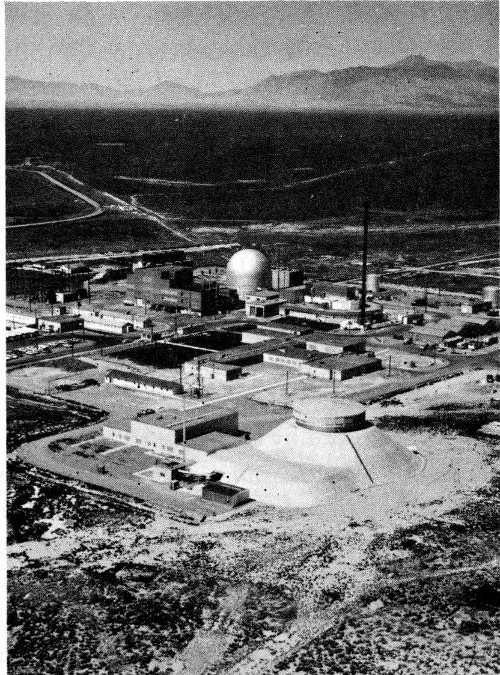
The Experimental Breeder Reactor No. 2 building complex in Idaho. The reactor is in the dome-shaped structure.
As it happens, though, nuclear fission is not the only route to useful nuclear energy.
Aston’s studies in the 1920s had shown that it was the middle-sized nuclei that were most tightly packed. Energy would be given off if middle-sized nuclei were produced from either extreme. Not only would energy be formed by the breakup of particularly massive nuclei through fission, but also through the combination of small nuclei to form larger ones (“nuclear fusion”).
In fact, from Aston’s studies it could be seen that, mass for mass, nuclear fusion would produce far more energy than nuclear fission. This was particularly true in the conversion of hydrogen to helium; that is, the conversion of the individual protons of 4 separate hydrogen nuclei into the 2-proton—2-neutron structure of the helium nucleus. A gram of hydrogen, undergoing fusion to helium, would deliver some fifteen times as much energy as a gram of uranium undergoing fission.
As early as 1920, the English astronomer Arthur Stanley Eddington (1882-1944) had speculated that the sun’s energy might be derived from the interaction of subatomic particles. Some sort of nuclear reaction seemed, by then, to be the most reasonable way of accounting for the vast energies constantly being produced by the sun.
The speculation became more plausible with each year. Eddington himself studied the structure of stars, and by 1926 had produced convincing theoretical reasons for supposing that the center of the sun was at enormous densities and temperatures. A temperature of some 15,000,000 to 20,000,000°C seemed to characterize the sun’s center.
At such temperatures, atoms could not exist in earthly fashion. Held together by the sun’s strong gravitational field, 147 they collided with such energy that all or almost all their electrons were stripped off, and little more than bare nuclei were left. These bare nuclei could approach each other much more closely than whole atoms could (which was why the center of the sun was so much more dense than earthly matter could be). The bare nuclei, smashing together at central-sun temperatures, could cling together and form more complex nuclei. Nuclear reactions brought about by such intense heat (millions of degrees) are called “thermonuclear reactions”.
As the 1920s progressed further studies of the chemical structure of the sun showed it to be even richer in hydrogen than had been thought. In 1929 the American astronomer Henry Norris Russell (1877-1957) reported evidence that the sun was 60% hydrogen in volume. (Even this was too conservative; 80% is considered more nearly correct now.) If the sun’s energy were based on nuclear reactions at all, then it had to be the result of hydrogen fusion. Nothing else was present in sufficient quantity to be useful as a fuel.
More and more was learned about the exact manner in which nuclei interacted and about the quantity of energy given off in particular nuclear reactions. It became possible to calculate what might be going on inside the sun by considering the densities and temperatures present, the kind and number of different nuclei available, and the quantity of energy that must be produced. In 1938 the German-American physicist Hans Albrecht Bethe (1906- ) and the German astronomer Carl Friedrich von Weizsäcker (1912- ) independently worked out the possible reactions, and hydrogen fusion was shown to be a thoroughly practical way of keeping the sun going.
Thanks to the high rate of energy production by thermonuclear reactions and to the vast quantity of hydrogen in the sun, not only has it been possible for the sun to have been radiating energy for the last 5,000,000,000 years or so, 148 but it will continue to radiate energy in the present fashion for at least 5,000,000,000 years into the future.
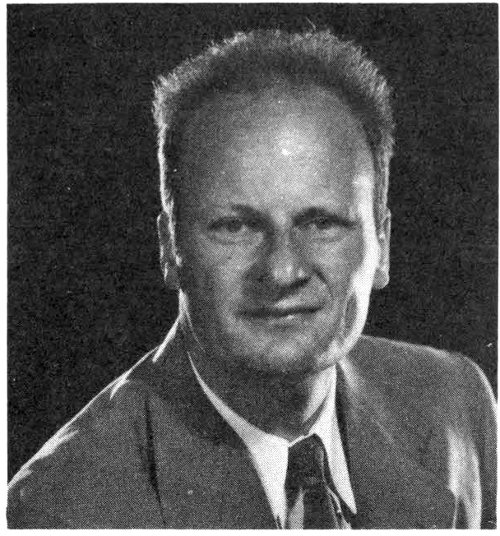
Hans Bethe
Even so, the sheer quantity of what is going on in the sun is staggering in earthly terms. In the sun 650,000,000 tons of hydrogen are converted into helium every second, and in the process each second sees the disappearance of 4,600,000 tons of mass.
Could thermonuclear reactions be made to take place on earth? The conditions that exist in the center of the sun would be extremely difficult to duplicate on the earth, so there was a natural search for any kind of nuclear fusion that would produce similar energies to those going on in the sun but which would be easier to bring about.
There are 3 hydrogen isotopes known to exist. Ordinary hydrogen is almost entirely hydrogen-1, with a nucleus made up of a single proton. Small quantities of hydrogen-2 (deuterium) with a nucleus made up of a proton plus a neutron also exist and such atoms are perfectly stable.
In 1934 Rutherford, along with the Australian physicist Marcus Laurence Elwin Oliphant (1901- ) and the Austrian chemist Paul Harteck (1902- ) sent hydrogen-2 149 nuclei flying into hydrogen-2 targets and formed hydrogen-3 (also called “tritium” from the Greek word for “third”) with a nucleus made up of a proton plus 2 neutrons. Hydrogen-3 is mildly radioactive.
Hydrogen-2 fuses to helium more easily than hydrogen-1 does and, all things being equal, hydrogen-2 will do so at lower temperatures than hydrogen-1. Hydrogen-3 requires lower temperatures still. But even for hydrogen-3 it still takes millions of degrees.
Hydrogen-3, although the easiest to be forced to undergo fusion, exists only in tiny quantities.
Hydrogen-2, therefore, is the one to pin hopes on especially in conjunction with hydrogen-3. Only 1 atom out of every 6000 hydrogen atoms is hydrogen-2, but that is enough. There exists a vast ocean on earth that is made up almost entirely of water molecules and in each water molecule 2 hydrogen atoms are present. Even if only 1 in 6000 of these hydrogen atoms is deuterium that still means there are about 35,000 billion tons of deuterium in the ocean.
What’s more, it isn’t necessary to dig for that deuterium or to drill for it. If ocean water is allowed to run through separation plants, the deuterium can be extracted without very much trouble. In fact, for the energy you could get out of it, deuterium from the oceans, extracted by present methods and without allowing for future improvement, would be only one-hundredth as expensive as coal.
The deuterium in the world’s ocean, if allowed to undergo fusion little by little, would supply mankind with enough energy to keep us going at the present rate for 500,000,000,000 years. To be sure, to make deuterium fusion practical, it may be necessary to make use of rarer substances such as the light metal lithium. This will place a sharper limit on the energy supply but even if we are careful, fusion would probably supply mankind with energy for as long as mankind will exist.
Then, too, there would seem to be no danger of hydrogen fusion plants running out of control. Only small quantities of deuterium would be in the process of fusion at any one time. If anything at all went wrong, the deuterium supply could be automatically cut off and the fusion process, with so little involved, would then stop instantly. Moreover, there would be less reason to worry about atomic wastes, for the most dangerous products—hydrogen-3 and neutrons—could be easily taken care of.
It seems ideal, but there is a catch. However clear the theory, before a fusion power station can be established some practical method must be found to start the fusion process, which means finding some way for attaining temperatures in the millions of degrees.
One method for obtaining the necessary temperature was known by 1945. An exploding fission bomb would do it. If, somehow, the necessary hydrogen-2 was combined with a fission bomb, the explosion would set off a fusion reaction that would greatly multiply the energy released. You would have in effect a “thermonuclear bomb”. (To the general public, this was commonly known as a “hydrogen bomb” or an “H-bomb”.)
In 1952 the first fusion device was exploded by the United States in the Marshall Islands. Within months, the Soviet Union had exploded one of its own and in time thermonuclear bombs thousands of times as powerful as the first fission bomb over Hiroshima were built and exploded.
All thermonuclear bombs have been exploded only for test purposes. Even testing seems to be dangerous, however, at least if it is carried on in the open atmosphere. The radioactivity liberated spreads over the world and may do slow but cumulative damage.
However effective a fusion bomb may be in liberating vast quantities of energy, it is not what one has in mind when 151 speaking of a fusion power station. The energy of a fusion bomb is released all at once and its only function is that of utter destruction. What is wanted is the production of fusion energy at a low and steady rate—a rate that is under the control of human operators.
The sun, for instance, is a vast fusion furnace 866,000 miles across, but it is a controlled one—even though that control is exerted by the impersonal laws of nature. It releases energy at a very steady and very slow rate. (The rate is not slow in human terms, of course, but stars sometimes do release their energy in a much more cataclysmic fashion. The result is a “supernova” in which for a short time a single star will increase its radiation to as much as a trillion times its normal level.)
The sun (or any star) going at its normal rate is controlled and steady in its output because of the advantage of huge mass. An enormous mass, composed mainly of hydrogen, compresses itself, through its equally enormous gravitational field, into huge densities and temperatures at its center, thus igniting the fusion reaction—while the same gravitational field keeps the sun together against its tendency to expand.
There is, as far as scientists know, no conceivable way of concentrating a high gravitational field in the absence of the required mass, and the creation of controlled fusion on earth must therefore be done without the aid of gravity. Without a huge gravitational force we cannot simultaneously bring about sun-center densities and sun-center temperatures; one or the other must go.
On the whole, it would take much less energy to aim at the temperatures than at the densities and would be much more feasible. For this reason, physicists have been attempting, all through the nuclear age, to heat thin wisps of hydrogen to enormous temperature. Since the gas is thin, the nuclei are farther apart and collide with each other far fewer times per second. To achieve fusion ignition, therefore, temperatures must be considerably higher than those at the center of the sun. In 1944 Fermi calculated that it might take a temperature of 50,000,000° to ignite a hydrogen-3 fusion with hydrogen-2 under earthly conditions, and 400,000,000° to ignite hydrogen-2 fusion alone. To ignite hydrogen-1 fusion, which is what goes on in the sun (at a mere 15,000,000°), physicists would have to raise their sights to beyond the billion-degree mark.
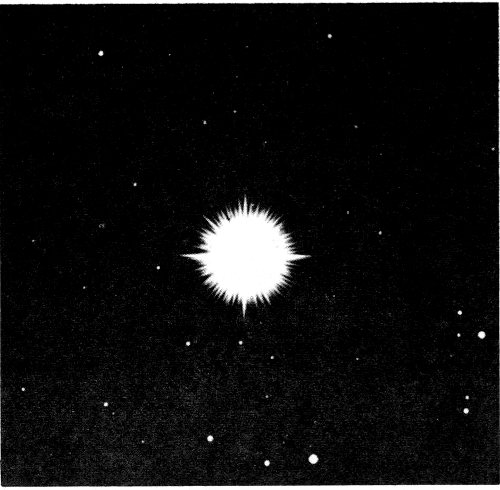
A supernova photographed on March 10, 1935.
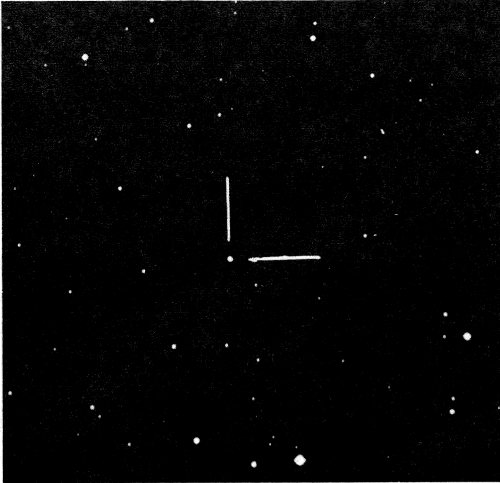
The same star on May 6.
This would make it seem almost essential to use hydrogen-3 in one fashion or another. Even if it can’t be prepared in quantity to begin with, it might be formed by neutron bombardment of lithium, with the neutrons being formed by the fusion reaction. In this way, you would start with lithium and hydrogen-2 plus a little hydrogen-3. The hydrogen-3 is formed as fast as it is used up. Although in the end hydrogen is converted to helium in a controlled fusion reaction as in the sun, the individual steps in the reaction under human control are quite different from those in the sun.
Still, even the temperatures required for hydrogen-3 represent an enormous problem, particularly since the temperature must not only be reached, but must be held for a period of time. (You can pass a piece of paper rapidly through a candle flame without lighting it. It must be held in the flame for a short period to give it a chance to heat and ignite.)
The English physicist John David Lawson (1923- ) worked out the requirements in 1957. The time depended on the density of the gas. The denser the gas, the shorter the period over which the temperature had to be maintained. If the gas is about one hundred-thousand times as dense as air, the proper temperature must be held, under the most favorable conditions, for about one thousandth of a second.
There are a number of different ways in which a quantity of hydrogen can be heated to very high temperatures—through electric currents, through magnetic fields, through 154 laser beams and so on. As the temperature goes up into the tens of thousands of degrees, the hydrogen atoms (or any atoms) are broken up into free electrons and bare nuclei. Such a mixture of charged particles is called a “plasma”. Ever since physicists have begun to try to work with very hot gases, with fusion energy in mind, they have had to study the properties of such “plasma”, and a whole new science of “plasma physics” has come into existence.
But if you do heat a gas to very high temperatures, it will tend to expand and thin out to uselessness. How can such a super-hot gas be confined in a fixed volume without an enormous gravitational field to hold it together?
An obvious answer would be to place it in a container, but no ordinary container of matter will serve to hold the hot gas. You may think this is because the temperature of the gas will simply melt or vaporize whatever matter encloses it. This is not so. Although the gas is at a very high temperature, it is so thin that it has very little total heat. It does not have enough heat to melt the solid walls of a container. What happens instead is that the hot plasma cools down the moment it touches the solid walls and the entire attempt to heat it is ruined.
What’s more, if you try to invest the enormous energies required to keep the plasma hot despite the cooling effect of the container walls, then the walls will gradually heat and melt. Nor must one wait for the walls to melt and the plasma to escape before finding the attempt at fusion ruined. Even as the walls heat up they liberate some of their own atoms into the plasma and introduce impurities that will prevent the fusion reaction.
Any material container is therefore out of the question.
Fortunately, there is a nonmaterial way of confining plasma. Since plasma consists of a mixture of electrically charged particles, it can experience electromagnetic interactions. Instead of keeping the plasma in a material container, you can surround it by a magnetic field that is designed to 155 keep it in place. Such a magnetic field is not affected by any heat, however great, and cannot be a source of material impurity.
In 1934, the American physicist Willard Harrison Bennett (1903- ) had worked out a theory dealing with the behavior of magnetic fields enclosing plasma. It came to be called the “pinch effect” because the magnetic field pinched the gas together and held it in place.
The first attempt to make use of the pinch effect for confining plasma, with eventual ignition of fusion in mind, was in 1951 by the English physicist Alan Alfred Ware (1924- ). Other physicists followed, not only in Great Britain, but in the United States and the Soviet Union as well.
The first use of the pinch effect was to confine the plasma in a cylinder. This, however, could not be made to work. The situation was too unstable. The plasma was held momentarily, then writhed and broke up.
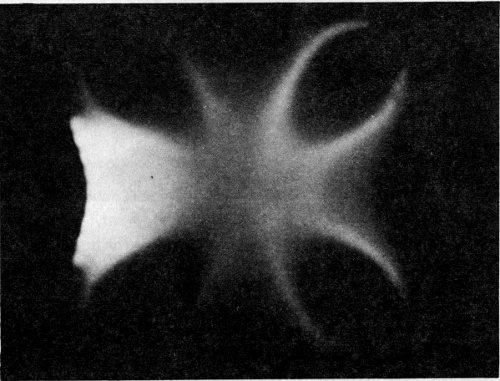
Plasma in a magnetic field.
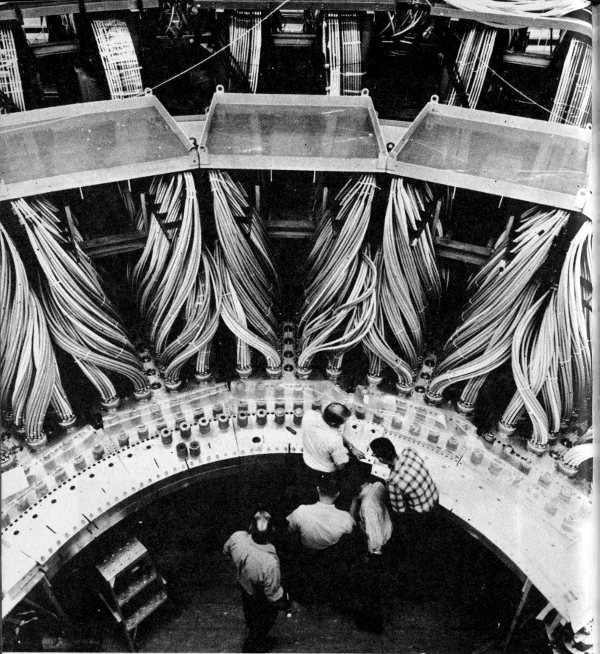
Enormous machines and complex equipment, such as the Scyllac machine shown above, are required for nuclear fusion research.
Attempts were made to remove the instability. The field was so designed as to be stronger at the ends of the cylinder than elsewhere. The particles in the plasma would stream toward one end or another and would then bounce back producing a so-called “magnetic mirror”.
In 1951 the American physicist Lyman Spitzer, Jr. (1914- ) had worked out the theoretical benefits to be derived from a container twisted into a figure-eight shape. Eventually, such devices were built and called “stellarators” from the Latin word for “star”, because it was hoped that it would produce the conditions that would allow the sort of fusion reactions that went on in stars.
All through the 1950s and 1960s, physicists have been slowly inching toward their goal, reaching higher and higher temperatures and holding them for longer and longer periods in denser and denser gases.
In 1969 the Soviet Union used a device called “Tokamak-3” (a Russian abbreviation for their phrase for “electric-magnetic”) to keep a supply of hydrogen-2, a millionth as dense as air, in place while heating it to tens of millions of degrees for a hundredth of a second.
A little denser, a little hotter, a little longer—and controlled fusion might become possible.[5]
Is there anything that lies beyond fusion?
When hydrogen undergoes fusion and becomes helium, only 0.7% of the original mass of the hydrogen is converted to energy. Is it possible to take a quantity of mass and convert all of it, every bit, to energy? Surely that would be the ultimate energy source. Mass for mass, that would deliver 140 times as much energy as hydrogen fusion would; it would be as far beyond hydrogen fusion as hydrogen fusion is beyond uranium fission.
And, as a matter of fact, total annihilation of matter is conceivable under some circumstances.
In 1928 the English physicist Paul Adrien Maurice Dirac (1902- ) presented a treatment of the electron’s properties that made it appear as though there ought also to exist a particle exactly like the electron in every respect except that it would be opposite in charge. It would carry a positive electric charge exactly as large as the electron’s negative one.
If the electron is a particle, this suggested positively charged twin would be an “antiparticle”. (The prefix comes from a Greek word meaning “opposite”.)
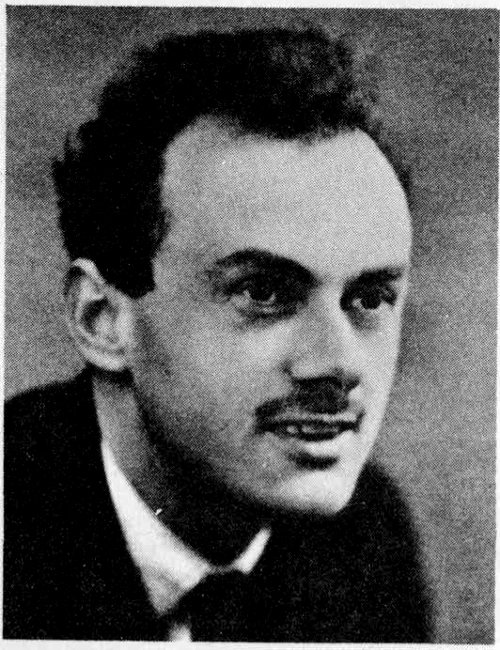
P. A. M. Dirac
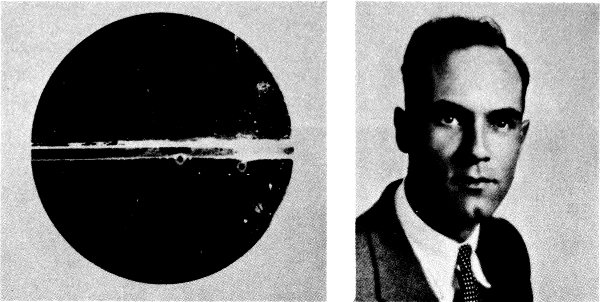
The first picture of the positron (left) was taken in a Wilson cloud chamber. On the right is C. D. Anderson, the discoverer of the positron.
The proton is not the electron’s antiparticle. Though a proton carries the necessary positive charge that is exactly as large as the negative charge of the electron, the proton has a much larger mass than the electron has. Dirac’s theory required that the antiparticle have the same mass as the particle to which it corresponded.
In 1932 C. D. Anderson was studying the impact of cosmic particles on lead. In the process, he discovered signs of a particle that left tracks exactly like those of an electron, but tracks that curved the wrong way in a magnetic field. This was a sure sign that it had an electric charge opposite to that of the electron. He had, in short, discovered the electron’s antiparticle and this came to be called the “positron”.
Positrons were soon detected elsewhere too. Some radioactive isotopes, formed in the laboratory by the Joliot-Curies and by others, were found to emit positive beta particles—positrons rather than electrons. When an ordinary beta particle, or electron, was emitted from a nucleus, a neutron within the nucleus was converted to a proton. When a positive beta particle, a positron, was emitted, the reverse happened—a proton was converted to a neutron.
A positron, however, does not endure long after formation. All about it were atoms containing electrons. It could not move for more than a millionth of a second or so before it encountered one of those electrons. When it did, there was an attraction between the two, since they were of opposite electric charge. Briefly they might circle each other (to form a combination called “positronium”) but only very briefly. Then they collided and, since they were opposites, each cancelled the other.
The process whereby an electron and a positron met and cancelled is called “mutual annihilation”. Not everything was gone, though. The mass, in disappearing, was converted into the equivalent amount of energy, which made its appearance in the form of one or more gamma rays.
(It works the other way, too. A gamma ray of sufficient energy can be transformed into an electron and a positron. This phenomenon, called “pair production”, was observed as early as 1930 but was only properly understood after the discovery of the positron.)
Of course, the mass of electrons and positrons is very small and the amount of energy released per electron is not enormously high. Still, Dirac’s original theory of antiparticles was not confined to electrons. By his theory, any particle ought to have some corresponding antiparticle. Corresponding to the proton, for instance, there ought to be an “antiproton”. This would be just as massive as the proton and would carry a negative charge just as large as the proton’s positive charge.
An antiproton, however, is 1836 times as massive as a positron. It would take gamma rays or cosmic particles with 1836 times as much energy to form the proton-antiproton pair as would suffice for the electron-positron pair. Cosmic particles of the necessary energies existed but they were rare and the chance of someone being present with a particle detector just as a rare super-energetic cosmic particle happened to form a proton-antiproton pair was very small.
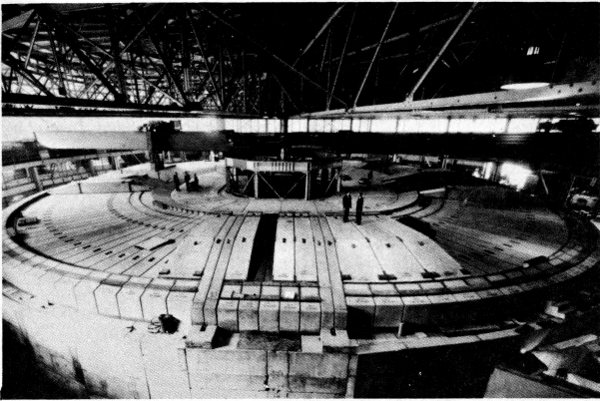
The Bevatron began operation in 1954.
Physicists had to wait until they had succeeded in designing particle accelerators that would produce enough energy to allow the creation of proton-antiproton pairs. This came about in the early 1950s when a device called the “Cosmotron” was built at Brookhaven National Laboratory in Long Island in 1952 and another called the “Bevatron” at the University of California in Berkeley in 1954.
Using the Bevatron in 1956, Segrè (the discoverer of technetium who had, by that time, emigrated to the United States), the American physicist Owen Chamberlain (1920- ), and others succeeded in detecting the antiproton.
The antiproton was as unlikely to last as long as the positron was. It was surrounded by myriads of proton-containing nuclei and in a tiny fraction of a second it would encounter one. The antiproton and the proton also underwent mutual annihilation, but having 1836 times the mass, they produced 1836 times the energy that was produced in the case of an electron and a positron.
There was even an “antineutron”, a particle reported in 1956 by the Italian-American physicist Oreste Piccioni 162 (1915- ) and his co-workers. Since the neutron has no charge, the antineutron has no charge either, and one might wonder how the antineutron would differ from the neutron then. Actually, both have a small magnetic field. In the neutron the magnetic field is pointed in one direction with reference to the neutron’s spin; in the antineutron it is pointed in the other.
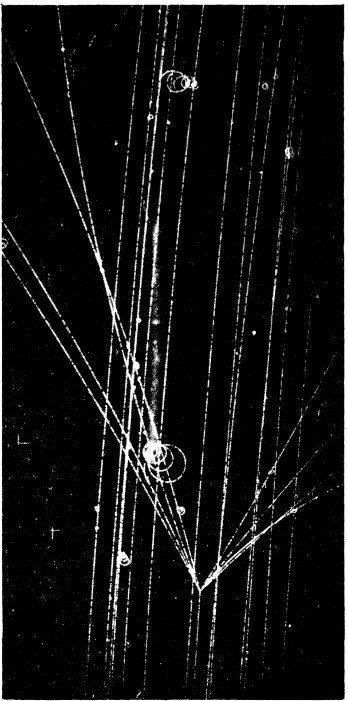
Bubble chamber photograph of an antiproton annihilation.
In 1965 the American physicist Leon Max Lederman (1922- ) and his co-workers produced a combination of an antiproton and an antineutron that together formed an “antideuteron”, which is the nucleus of antihydrogen-2.
This is good enough to demonstrate that if antiparticles existed by themselves without the interfering presence of ordinary particles, they could form “antimatter”, which 163 would be precisely identical with ordinary matter in every way except for the fact that electric charges and magnetic fields would be turned around.
If antimatter were available to us, and if we could control the manner in which it united with matter, we would have a source of energy much greater and, perhaps, simpler to produce than would be involved in hydrogen fusion.
To be sure, there is no antimatter on earth, except for the submicroscopic amounts that are formed by the input of tremendous energies. Nor does anyone know of any conceivable way of forming antimatter at less energy than that produced by mutual annihilation, so that we might say that mankind can never make an energy profit out of it—except that with the memory of Rutherford’s prediction that nuclear energy of any kind could never be tapped, one hesitates to be pessimistic about anything.
Physical theory makes it seem that particles and antiparticles ought to exist in the universe in equal quantities. Yet on earth (and, we can be quite certain, in the rest of the solar system and even, very likely, in the rest of the galaxy) protons, neutrons, and electrons are common, while antiprotons, antineutrons, and positrons are exceedingly rare.
Could it be that when the universe was first formed there were indeed equal quantities of particles and antiparticles but that they were somehow segregated, perhaps into galaxies and “antigalaxies”? If so, there might occasionally be collisions of a galaxy and an antigalaxy with the evolution of vast quantities of energy as mutual annihilation on a cosmic scale takes place.
There are, in fact, places in the heavens where radiation is unusually high in quantity and in energy. Can we be witnessing such enormous mutual annihilation?
Indeed, it is not altogether inconceivable that we may still have new types of forces and new sources of energy to 164 discover. Until about 1900, no one suspected the existence of nuclear energy. Are we quite sure now that nuclear energy brings us to the end, and that there is not a form of energy more subtle still, and greater?
In 1962, for instance, certain puzzling objects called “quasars” were discovered far out in space, a billion light-years or more away from us. Each one shines from 10 to 100 times as brilliantly as an entire ordinary galaxy does, and yet may be no more than a hundred-thousandth as wide as a galaxy.
This is something like finding an object 10 miles across that delivers as much total light as 100 suns.
It is very hard to understand where all that energy comes from and why it should be concentrated into so tiny a volume. Astronomers have tried to explain it in terms of the four interactions now known, but is it possible that there is a fifth greater than any of the four?
If so, it is not impossible that eventually man’s restless brain may come to understand and even utilize it.
| Inside front cover | Copyright © by Abelard-Shuman, Ltd., New York. Reprinted by permission from Inside the Atom, Isaac Asimov, 1966. |
Basic Laws of Matter (revised edition), Harrie S. W. Massey and Arthur R. Quinton, Herald Books, Bronxville, New York, 1965, 178 pp., $3.75. Grades 7-9. A nontechnical presentation of atoms and the laws governing their behavior.
Biography of Physics, George Gamow, Harper & Row, Publishers, New York, 1961, 338 pp., $6.50 (hardback); $2.75 (paperback). Grades 9-12. A history of theoretical physics.
Discoverer of X Rays: Wilhelm Conrad Roentgen, Arnulf K. Esterer, Julian Messner, New York, 1968, 191 pp., $3.50. Grades 7-10. This interesting biography includes a brief, but very helpful, pronouncing gazetteer of the German, Swiss, and Dutch names in the text.
Ernest Rutherford: Architect of the Atom, Peter Kelman and A. Harris Stone, Prentice-Hall, Inc., Englewood Cliffs, New Jersey, 1969, 72 pp., $3.95. Grades 5-7. A well-done biography of this famous atomic scientist. Many of the drawings illustrate theoretical ideas very well for the elementary grades. A glossary is included.
Enrico Fermi: Atomic Pioneer, Doris Faber, Prentice-Hall, Inc., Englewood Cliffs, New Jersey, 1966, 86 pp., $3.95. Grades 5-8. A biography of the man who built the first reactor.
Giant of the Atom: Ernest Rutherford, Robin McKown, Julian Messner, New York, 1962, 191 pp., $3.50. Grades 7-12. The life and accomplishments of a great physicist.
The History of the Atomic Bomb, Michael Blow, American Heritage Publishing Company, Inc., New York, 1968, 150 pp., $5.95. Grades 5-9. This sumptuously illustrated history provides an informative explanation of nuclear physics in addition to comprehensive coverage of the bomb’s development and use.
166Inside the Atom, Isaac Asimov, Abelard-Schuman, Ltd., New York, 1966, 197 pp., $4.00. Grades 7-10. This comprehensive, well-written text explains nuclear energy and its applications.
Madame Curie: A Biography, Eve Curie, translated by Vincent Sheean, Doubleday and Company, Inc., New York, 1937, 385 pp., $5.95 (hardback); $0.95 (paperback). Grades 9-12. This superb biography, which won the 1937 National Book Award for Nonfiction, illustrates dramatically the full spectrum of Marie Curie’s life.
Men Who Mastered the Atom, Robert Silverberg, G. P. Putnam’s Sons, New York, 1965, 193 pp., $3.49. Grades 7-9. Atomic energy history is told through the work of pioneer scientists from Thales to present-day researchers.
The Neutron Story, Donald J. Hughes, Doubleday and Company, Inc., New York, 1959, 158 pp., out of print. Grades 7-9. A substantial and interesting account of neutron physics.
Niels Bohr: The Man Who Mapped the Atom, Robert Silverberg, MacRae Smith Company, Philadelphia, Pennsylvania, 1965, 189 pp., $3.95. Grades 8-12. An exciting, suspenseful, and humorous biography of one of the pioneers in atomic energy. Includes a glossary and references.
The Questioners: Physicists and the Quantum Theory, Barbara Lovett Cline, Crowell Collier and MacMillan, Inc., New York, 1965, 274 pp., $5.00 (hardback); available in paperback with the title Men Who Made A New Physics: Physicists and the Quantum Theory, New American Library, Inc., New York, $0.75. Grades 9-12. An exceptionally well-delineated and personable account of the development of the quantum theory by physicists in the first quarter of this century.
The Restless Atom, Alfred Romer, Doubleday and Company, Inc., New York, 1960, 198 pp., $1.25. Grades 9-12. A 167 stimulating nonmathematical account of the classic early experiments that advanced knowledge about atomic particles.
Roads to Discovery, Ralph E. Lapp, Harper and Row, Publishers, New York, 1960, 191 pp., out of print. Grades 10-12. Historical survey of nuclear physics beginning with Roentgen’s discovery of X rays and concluding with the discoveries of the rare elements.
Secret of the Mysterious Rays: The Discovery of Nuclear Energy, Vivian Grey, Basic Books, Inc., Publishers, New York, 1966, 120 pp., $3.95. Grades 4-8. This outstanding history of nuclear research from Roentgen to Fermi is dramatically presented. The uncertainty of the unknown, the accidental discovery and the often lengthy and tedious research are woven in this story of scientists from around the world who pooled their knowledge and experience to unlock “the secrets of the mysterious rays”.
Wilhelm Roentgen and the Discovery of X Rays, Bern Dibner, Franklin Watts, Inc., New York, 1968, 149 pp., $2.95. Grades 5-8. This detailed biography, illustrated with line drawings, historical photographs, and papers, is a fine addition to Watts’ “Immortals of Science” Series.
Working with Atoms, Otto R. Frisch, Basic Books, Inc., New York, 1965, 96 pp., $4.95. Grades 9-12. Dr. Frisch presents a history of nuclear energy research and provides experiments for the reader. He gives a personal account of the pioneering work in which he and Lise Meitner explained the splitting of uranium and introduced the term “nuclear fission”.
An American Genius: The Life of Ernest Orlando Lawrence, Herbert Childs, E. P. Dutton and Company, Inc., New York, 1968, 576 pp., $12.95. This well-written, scientifically accurate, and very interesting biography captures the excitement of Lawrence’s life. Ernest Lawrence was the inventor of the cyclotron, a major member of the wartime atomic energy development, and the director of the Lawrence Radiation Laboratory.
The Atom and Its Nucleus, George Gamow, Prentice-Hall, Inc., Englewood Cliffs, New Jersey, 1961, 153 pp., $1.25. A popular-level discussion of nuclear structure and the applications of nuclear energy.
Atomic Energy for Military Purposes, Henry D. Smyth, Princeton University Press, Princeton, New Jersey, 1945, 308 pp., $4.00. A complete account of the wartime project that developed the first nuclear weapons and of the considerations that prompted their use.
Atomic Quest, Arthur H. Compton, Oxford University Press, Inc., New York, 1956, 370 pp., $7.95. A personal narrative of the research that led to the release of atomic energy on a useful scale by a scientist who played a principal part in the atomic bomb project during World War II.
The Atomists (1805-1933), Basil Schonland, Oxford University Press, Inc., New York, 1968, 198 pp., $5.60. This book, which can be understood by anyone who has had a high school physics course, presents atomic theory development from Dalton through Bohr. It achieves a good balance between popular treatments and highly technical works without slighting the technical aspects.
Atoms in the Family: My Life with Enrico Fermi, Laura Fermi, Chicago University Press, Chicago, Illinois, 1954, 267 pp., $5.00 (hardback); $2.45 (paperback). Laura Fermi writes about her husband, Enrico Fermi, the physicist who led the group that built the first nuclear reactor.
169The Born-Einstein Letters: The Correspondence Between Albert Einstein and Max and Hedwig Born from 1916 to 1955, commentaries by Max Born, translated by Irene Born, Walker and Company, 1971, 240 pp., $8.50. These interesting letters reveal the scientific and personal lives of these two atomic scientists.
Einstein: His Life and Times, Philipp Frank, Alfred A. Knopf, Inc., New York, 1953, 298 pp., $6.95. A brilliant biography that reveals the richness of Einstein’s life and work and the tremendous impact he made upon physics.
Enrico Fermi, Physicist, Emilio Segrè, Chicago University Press, Chicago, Illinois, 1970, 288 pp., $6.95. This biography tells of Enrico Fermi’s intellectual history, achievements, and his scientific style. The scientific problems faced or solved by Fermi are explained in layman’s terms. Emilio Segrè was a friend and scientific collaborator who worked with Fermi for many years.
An Introduction to Physical Science: The World of Atoms (second edition), John J. G. McCue, The Ronald Press Company, New York, 1963, 775 pp., $9.50. This textbook was written for college humanities students.
J. J. Thomson: Discoverer of the Electron, George Thomson, Doubleday and Company, Inc., New York, 1966, 240 pp., $1.45. This biography, written by J. J. Thomson’s son, describes his research at the famed Cavendish Laboratory in Cambridge, England.
John Dalton and the Atom, Frank Greenaway, Cornell University Press, Ithaca, New York, 1966, 256 pp., $7.50. A biography for the general reader and the high school science student. Dalton is famous for his development of chemical combinations based on atomic theory. This provided the basis for modern structural theories of chemistry.
John Dalton and the Atomic Theory: The Biography of a Natural Philosopher, Elizabeth C. Patterson, Doubleday and Company, Inc., New York, 1970, 320 pp., $6.95 170 (hardback); $1.95 (paperback). The drama of Dalton’s life—his rigorous self-teaching, scientific work, and struggle to overcome class barriers in 19th century England—is well presented. Quotations from letters, diaries, and published works give a clear picture of Dalton’s atomic theory research and his time.
Man-made Transuranium Elements, Glenn T. Seaborg, Prentice Hall, Inc., Englewood Cliffs, New Jersey, 1963, 120 pp., $6.95 (hardback); $2.95 (paperback). The discovery, properties, and applications of elements heavier than uranium are considered in this book, which is designed as an introduction to the subject. Glenn Seaborg was co-discoverer of nine of the twelve transuranium elements.
The Nature of Matter: Physical Theory from Thales to Fermi, Ginestra Amaldi, translated by Peter Astbury, Chicago University Press, Chicago, Illinois, 1966, 332 pp., $5.95. A nontechnical history of atomic energy.
Niels Bohr: His Life and Work as Seen by His Friends and Colleagues, S. Rozental (Editor), John Wiley and Sons, Inc., New York, 1967, 355 pp., $5.95. An articulate and scholarly biography by the friends and co-workers of this outstanding atomic pioneer.
Niels Bohr: The Man, His Science, and the World They Changed, Ruth Moore, Alfred A. Knopf, Inc., New York, 1966, 436 pp., $7.95. An interesting biography of one of the pioneers in the study of the internal structure of the atom.
Otto Hahn: My Life, Otto Hahn, translated by Ernest Kaiser and Eithne Wilkins, Herder and Herder, Inc., New York, 1970, 240 pp., $6.50. Autobiography of the man who discovered that the atom could be split.
Otto Hahn: A Scientific Autobiography, Otto Hahn, Willy Ley, editor and translator, Charles Scribner’s Sons, New York, 1966, 320 pp., $9.95. Otto Hahn, winner of the 1944 Nobel Prize for his work in atomic fission, reviews the 171 pioneer days in which a new science was created, and the role he played in its development.
Physics and Beyond: Encounters and Conversations, Werner Heisenberg, translated by Arthur J. Pomerans, Harper and Row, Publishers, New York, 1970, 247 pp., $7.95. Werner Heisenberg, a Nobel Prize physicist, presents his autobiography in the form of conversations with such men as Max Planck, Albert Einstein, Niels Bohr, Ernest Rutherford, Otto Hahn, and Enrico Fermi.
Physics for Poets, Robert H. March, McGraw-Hill Book Company, New. York, 1970, 302 pp., $7.50. A physics textbook for nonscience students. The book covers certain developments of classical mechanics, relativity, and atomic and quantum physics. With this book the author won the 1971 American Institute of Physics—U. S. Steel Foundation Science Writing Award in Physics and Astronomy.
Sourcebook on Atomic Energy (third edition), Samuel Glasstone, Van Nostrand Reinhold Company, New York, 1967, 883 pp., $15.00. An excellent standard reference work, written for both scientists and the general public.
The Swift Years: The Robert Oppenheimer Story, Peter Michelmore, Dodd, Mead and Company, New York, 1969, 273 pp., $6.95. Oppenheimer’s complex personality is delineated in this well-written biography. In the bibliography is a list of books that Oppenheimer felt “had done the most to shape his vocational attitude and philosophy of life”.
The World of the Atom, 2 volumes, Henry A. Boorse and Lloyd Motz (Eds.), Basic Books, Inc., Publishers, New York, 1966, 1873 pp., $35.00. Contains the actual text of landmark documents in the history of atomic physics, each preceded by commentary that places it in the context of the discoverer’s personal life and in the conditions prevailing in science and in society in his time.
| Page facing inside cover | The “Horsehead” Nebula in Orion. Hale Observatories. |
| Author’s Photo | Jay K. Klein |
| Contents page | Lick Observatory |
| 116 | Samuel A. Goudsmit |
| 118 | From Atoms in the Family: My Life With Enrico Fermi, Laura Fermi, 1954. Copyright © by the University of Chicago Press. |
| 120 | Top row, left, Institut fur Radium-forschung und Kemphysik, right, Lotte Meitner-Graff, middle row, left, Nobel Institute, right, Ernest Orlando Lawrence Berkeley Laboratory; bottom row, right, Ernest Orlando Lawrence Berkeley Laboratory, left, P. H. Abelson. |
| 123 | Addison-Wesley Publishing Company |
| 130 | Top, Ike Verne; bottom, Oak Ridge National Laboratory. |
| 132 & 133 | Letter and Roosevelt picture from the Franklin D. Roosevelt Library; Johan Hagemeyer. |
| 136 & 137 | Argonne National Laboratory |
| 141 | U. S. Navy |
| 143 | Right, Westinghouse Electric Corporation |
| 145 | Argonne National Laboratory |
| 152 | Lick Observatory |
| 155 | Gulf Energy and Environmental Systems |
| 156 | Los Alamos Scientific Laboratory |
| 158 | Nobel Institute |
| 159 | Left, C. D. Anderson; right, Nobel Institute. |
| 161 | Ernest Orlando Lawrence Berkeley Laboratory |
★ U. S. GOVERNMENT PRINTING OFFICE: 1972 - 747-189/2
The U. S. Atomic Energy Commission publishes this series of information booklets for the general public. These booklets explain the many uses of nuclear energy.
The booklets are listed below by subject category.
Members of the general public may obtain free, single copies of six titles of their choice. Librarians and teachers may obtain free a complete set of the booklets. These requests should be made on school or library stationery. Those wishing to obtain larger quantities may purchase them if stocks are available. Orders for booklets and inquiries on prices and availability should be directed to:
USAEC—Technical Information Center, P. O. Box 62, Oak Ridge, TN 37830
Comments are invited regarding this booklet and others in the series.
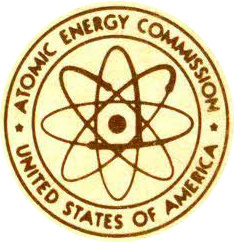
U. S. ATOMIC ENERGY COMMISSION
Office of Information Services
The Table of Contents in each volume contains relative hyperlinks to pages in all three volumes of Worlds Within Worlds:
These links function correctly if the books are read online, and can be made to work for books installed on a local drive or a website. (EBook-reader formats like ePub or Mobi do not support links between eBooks.)
To install these books in another file system, create a directory
(called localbooks in the example). Within that directory,
create a subdirectory for each eBook, as in this outline view:
Note that each eBook’s directory name is the same as the Project Gutenberg number for the eBook.
Each eBook directory may contain files in various formats; only the HTML files are relevant here; other files are optional.
HTML files are in a subdirectory named by the Gutenberg number followed by “-h”.
The HTML file itself has a name consisting of the Gutenberg number followed by “-h”, with a file extension of “.htm”.
Associated media files (such as images, MIDI files, etc.) are contained in a further subdirectory “images”
To view these files, open any of the “*-h.htm” files in a web browser.
End of the Project Gutenberg EBook of Worlds Within Worlds: The Story of
Nuclear Energy, Volume 3 (of 3), by Isaac Asimov
*** END OF THIS PROJECT GUTENBERG EBOOK WORLDS WITHIN WORLDS, VOL 3 ***
***** This file should be named 49821-h.htm or 49821-h.zip *****
This and all associated files of various formats will be found in:
http://www.gutenberg.org/4/9/8/2/49821/
Produced by Stephen Hutcheson, Dave Morgan and the Online
Distributed Proofreading Team at http://www.pgdp.net
Updated editions will replace the previous one--the old editions will
be renamed.
Creating the works from print editions not protected by U.S. copyright
law means that no one owns a United States copyright in these works,
so the Foundation (and you!) can copy and distribute it in the United
States without permission and without paying copyright
royalties. Special rules, set forth in the General Terms of Use part
of this license, apply to copying and distributing Project
Gutenberg-tm electronic works to protect the PROJECT GUTENBERG-tm
concept and trademark. Project Gutenberg is a registered trademark,
and may not be used if you charge for the eBooks, unless you receive
specific permission. If you do not charge anything for copies of this
eBook, complying with the rules is very easy. You may use this eBook
for nearly any purpose such as creation of derivative works, reports,
performances and research. They may be modified and printed and given
away--you may do practically ANYTHING in the United States with eBooks
not protected by U.S. copyright law. Redistribution is subject to the
trademark license, especially commercial redistribution.
START: FULL LICENSE
THE FULL PROJECT GUTENBERG LICENSE
PLEASE READ THIS BEFORE YOU DISTRIBUTE OR USE THIS WORK
To protect the Project Gutenberg-tm mission of promoting the free
distribution of electronic works, by using or distributing this work
(or any other work associated in any way with the phrase "Project
Gutenberg"), you agree to comply with all the terms of the Full
Project Gutenberg-tm License available with this file or online at
www.gutenberg.org/license.
Section 1. General Terms of Use and Redistributing Project
Gutenberg-tm electronic works
1.A. By reading or using any part of this Project Gutenberg-tm
electronic work, you indicate that you have read, understand, agree to
and accept all the terms of this license and intellectual property
(trademark/copyright) agreement. If you do not agree to abide by all
the terms of this agreement, you must cease using and return or
destroy all copies of Project Gutenberg-tm electronic works in your
possession. If you paid a fee for obtaining a copy of or access to a
Project Gutenberg-tm electronic work and you do not agree to be bound
by the terms of this agreement, you may obtain a refund from the
person or entity to whom you paid the fee as set forth in paragraph
1.E.8.
1.B. "Project Gutenberg" is a registered trademark. It may only be
used on or associated in any way with an electronic work by people who
agree to be bound by the terms of this agreement. There are a few
things that you can do with most Project Gutenberg-tm electronic works
even without complying with the full terms of this agreement. See
paragraph 1.C below. There are a lot of things you can do with Project
Gutenberg-tm electronic works if you follow the terms of this
agreement and help preserve free future access to Project Gutenberg-tm
electronic works. See paragraph 1.E below.
1.C. The Project Gutenberg Literary Archive Foundation ("the
Foundation" or PGLAF), owns a compilation copyright in the collection
of Project Gutenberg-tm electronic works. Nearly all the individual
works in the collection are in the public domain in the United
States. If an individual work is unprotected by copyright law in the
United States and you are located in the United States, we do not
claim a right to prevent you from copying, distributing, performing,
displaying or creating derivative works based on the work as long as
all references to Project Gutenberg are removed. Of course, we hope
that you will support the Project Gutenberg-tm mission of promoting
free access to electronic works by freely sharing Project Gutenberg-tm
works in compliance with the terms of this agreement for keeping the
Project Gutenberg-tm name associated with the work. You can easily
comply with the terms of this agreement by keeping this work in the
same format with its attached full Project Gutenberg-tm License when
you share it without charge with others.
1.D. The copyright laws of the place where you are located also govern
what you can do with this work. Copyright laws in most countries are
in a constant state of change. If you are outside the United States,
check the laws of your country in addition to the terms of this
agreement before downloading, copying, displaying, performing,
distributing or creating derivative works based on this work or any
other Project Gutenberg-tm work. The Foundation makes no
representations concerning the copyright status of any work in any
country outside the United States.
1.E. Unless you have removed all references to Project Gutenberg:
1.E.1. The following sentence, with active links to, or other
immediate access to, the full Project Gutenberg-tm License must appear
prominently whenever any copy of a Project Gutenberg-tm work (any work
on which the phrase "Project Gutenberg" appears, or with which the
phrase "Project Gutenberg" is associated) is accessed, displayed,
performed, viewed, copied or distributed:
This eBook is for the use of anyone anywhere in the United States and
most other parts of the world at no cost and with almost no
restrictions whatsoever. You may copy it, give it away or re-use it
under the terms of the Project Gutenberg License included with this
eBook or online at www.gutenberg.org. If you are not located in the
United States, you'll have to check the laws of the country where you
are located before using this ebook.
1.E.2. If an individual Project Gutenberg-tm electronic work is
derived from texts not protected by U.S. copyright law (does not
contain a notice indicating that it is posted with permission of the
copyright holder), the work can be copied and distributed to anyone in
the United States without paying any fees or charges. If you are
redistributing or providing access to a work with the phrase "Project
Gutenberg" associated with or appearing on the work, you must comply
either with the requirements of paragraphs 1.E.1 through 1.E.7 or
obtain permission for the use of the work and the Project Gutenberg-tm
trademark as set forth in paragraphs 1.E.8 or 1.E.9.
1.E.3. If an individual Project Gutenberg-tm electronic work is posted
with the permission of the copyright holder, your use and distribution
must comply with both paragraphs 1.E.1 through 1.E.7 and any
additional terms imposed by the copyright holder. Additional terms
will be linked to the Project Gutenberg-tm License for all works
posted with the permission of the copyright holder found at the
beginning of this work.
1.E.4. Do not unlink or detach or remove the full Project Gutenberg-tm
License terms from this work, or any files containing a part of this
work or any other work associated with Project Gutenberg-tm.
1.E.5. Do not copy, display, perform, distribute or redistribute this
electronic work, or any part of this electronic work, without
prominently displaying the sentence set forth in paragraph 1.E.1 with
active links or immediate access to the full terms of the Project
Gutenberg-tm License.
1.E.6. You may convert to and distribute this work in any binary,
compressed, marked up, nonproprietary or proprietary form, including
any word processing or hypertext form. However, if you provide access
to or distribute copies of a Project Gutenberg-tm work in a format
other than "Plain Vanilla ASCII" or other format used in the official
version posted on the official Project Gutenberg-tm web site
(www.gutenberg.org), you must, at no additional cost, fee or expense
to the user, provide a copy, a means of exporting a copy, or a means
of obtaining a copy upon request, of the work in its original "Plain
Vanilla ASCII" or other form. Any alternate format must include the
full Project Gutenberg-tm License as specified in paragraph 1.E.1.
1.E.7. Do not charge a fee for access to, viewing, displaying,
performing, copying or distributing any Project Gutenberg-tm works
unless you comply with paragraph 1.E.8 or 1.E.9.
1.E.8. You may charge a reasonable fee for copies of or providing
access to or distributing Project Gutenberg-tm electronic works
provided that
* You pay a royalty fee of 20% of the gross profits you derive from
the use of Project Gutenberg-tm works calculated using the method
you already use to calculate your applicable taxes. The fee is owed
to the owner of the Project Gutenberg-tm trademark, but he has
agreed to donate royalties under this paragraph to the Project
Gutenberg Literary Archive Foundation. Royalty payments must be paid
within 60 days following each date on which you prepare (or are
legally required to prepare) your periodic tax returns. Royalty
payments should be clearly marked as such and sent to the Project
Gutenberg Literary Archive Foundation at the address specified in
Section 4, "Information about donations to the Project Gutenberg
Literary Archive Foundation."
* You provide a full refund of any money paid by a user who notifies
you in writing (or by e-mail) within 30 days of receipt that s/he
does not agree to the terms of the full Project Gutenberg-tm
License. You must require such a user to return or destroy all
copies of the works possessed in a physical medium and discontinue
all use of and all access to other copies of Project Gutenberg-tm
works.
* You provide, in accordance with paragraph 1.F.3, a full refund of
any money paid for a work or a replacement copy, if a defect in the
electronic work is discovered and reported to you within 90 days of
receipt of the work.
* You comply with all other terms of this agreement for free
distribution of Project Gutenberg-tm works.
1.E.9. If you wish to charge a fee or distribute a Project
Gutenberg-tm electronic work or group of works on different terms than
are set forth in this agreement, you must obtain permission in writing
from both the Project Gutenberg Literary Archive Foundation and The
Project Gutenberg Trademark LLC, the owner of the Project Gutenberg-tm
trademark. Contact the Foundation as set forth in Section 3 below.
1.F.
1.F.1. Project Gutenberg volunteers and employees expend considerable
effort to identify, do copyright research on, transcribe and proofread
works not protected by U.S. copyright law in creating the Project
Gutenberg-tm collection. Despite these efforts, Project Gutenberg-tm
electronic works, and the medium on which they may be stored, may
contain "Defects," such as, but not limited to, incomplete, inaccurate
or corrupt data, transcription errors, a copyright or other
intellectual property infringement, a defective or damaged disk or
other medium, a computer virus, or computer codes that damage or
cannot be read by your equipment.
1.F.2. LIMITED WARRANTY, DISCLAIMER OF DAMAGES - Except for the "Right
of Replacement or Refund" described in paragraph 1.F.3, the Project
Gutenberg Literary Archive Foundation, the owner of the Project
Gutenberg-tm trademark, and any other party distributing a Project
Gutenberg-tm electronic work under this agreement, disclaim all
liability to you for damages, costs and expenses, including legal
fees. YOU AGREE THAT YOU HAVE NO REMEDIES FOR NEGLIGENCE, STRICT
LIABILITY, BREACH OF WARRANTY OR BREACH OF CONTRACT EXCEPT THOSE
PROVIDED IN PARAGRAPH 1.F.3. YOU AGREE THAT THE FOUNDATION, THE
TRADEMARK OWNER, AND ANY DISTRIBUTOR UNDER THIS AGREEMENT WILL NOT BE
LIABLE TO YOU FOR ACTUAL, DIRECT, INDIRECT, CONSEQUENTIAL, PUNITIVE OR
INCIDENTAL DAMAGES EVEN IF YOU GIVE NOTICE OF THE POSSIBILITY OF SUCH
DAMAGE.
1.F.3. LIMITED RIGHT OF REPLACEMENT OR REFUND - If you discover a
defect in this electronic work within 90 days of receiving it, you can
receive a refund of the money (if any) you paid for it by sending a
written explanation to the person you received the work from. If you
received the work on a physical medium, you must return the medium
with your written explanation. The person or entity that provided you
with the defective work may elect to provide a replacement copy in
lieu of a refund. If you received the work electronically, the person
or entity providing it to you may choose to give you a second
opportunity to receive the work electronically in lieu of a refund. If
the second copy is also defective, you may demand a refund in writing
without further opportunities to fix the problem.
1.F.4. Except for the limited right of replacement or refund set forth
in paragraph 1.F.3, this work is provided to you 'AS-IS', WITH NO
OTHER WARRANTIES OF ANY KIND, EXPRESS OR IMPLIED, INCLUDING BUT NOT
LIMITED TO WARRANTIES OF MERCHANTABILITY OR FITNESS FOR ANY PURPOSE.
1.F.5. Some states do not allow disclaimers of certain implied
warranties or the exclusion or limitation of certain types of
damages. If any disclaimer or limitation set forth in this agreement
violates the law of the state applicable to this agreement, the
agreement shall be interpreted to make the maximum disclaimer or
limitation permitted by the applicable state law. The invalidity or
unenforceability of any provision of this agreement shall not void the
remaining provisions.
1.F.6. INDEMNITY - You agree to indemnify and hold the Foundation, the
trademark owner, any agent or employee of the Foundation, anyone
providing copies of Project Gutenberg-tm electronic works in
accordance with this agreement, and any volunteers associated with the
production, promotion and distribution of Project Gutenberg-tm
electronic works, harmless from all liability, costs and expenses,
including legal fees, that arise directly or indirectly from any of
the following which you do or cause to occur: (a) distribution of this
or any Project Gutenberg-tm work, (b) alteration, modification, or
additions or deletions to any Project Gutenberg-tm work, and (c) any
Defect you cause.
Section 2. Information about the Mission of Project Gutenberg-tm
Project Gutenberg-tm is synonymous with the free distribution of
electronic works in formats readable by the widest variety of
computers including obsolete, old, middle-aged and new computers. It
exists because of the efforts of hundreds of volunteers and donations
from people in all walks of life.
Volunteers and financial support to provide volunteers with the
assistance they need are critical to reaching Project Gutenberg-tm's
goals and ensuring that the Project Gutenberg-tm collection will
remain freely available for generations to come. In 2001, the Project
Gutenberg Literary Archive Foundation was created to provide a secure
and permanent future for Project Gutenberg-tm and future
generations. To learn more about the Project Gutenberg Literary
Archive Foundation and how your efforts and donations can help, see
Sections 3 and 4 and the Foundation information page at
www.gutenberg.org
Section 3. Information about the Project Gutenberg Literary Archive Foundation
The Project Gutenberg Literary Archive Foundation is a non profit
501(c)(3) educational corporation organized under the laws of the
state of Mississippi and granted tax exempt status by the Internal
Revenue Service. The Foundation's EIN or federal tax identification
number is 64-6221541. Contributions to the Project Gutenberg Literary
Archive Foundation are tax deductible to the full extent permitted by
U.S. federal laws and your state's laws.
The Foundation's principal office is in Fairbanks, Alaska, with the
mailing address: PO Box 750175, Fairbanks, AK 99775, but its
volunteers and employees are scattered throughout numerous
locations. Its business office is located at 809 North 1500 West, Salt
Lake City, UT 84116, (801) 596-1887. Email contact links and up to
date contact information can be found at the Foundation's web site and
official page at www.gutenberg.org/contact
For additional contact information:
Dr. Gregory B. Newby
Chief Executive and Director
gbnewby@pglaf.org
Section 4. Information about Donations to the Project Gutenberg
Literary Archive Foundation
Project Gutenberg-tm depends upon and cannot survive without wide
spread public support and donations to carry out its mission of
increasing the number of public domain and licensed works that can be
freely distributed in machine readable form accessible by the widest
array of equipment including outdated equipment. Many small donations
($1 to $5,000) are particularly important to maintaining tax exempt
status with the IRS.
The Foundation is committed to complying with the laws regulating
charities and charitable donations in all 50 states of the United
States. Compliance requirements are not uniform and it takes a
considerable effort, much paperwork and many fees to meet and keep up
with these requirements. We do not solicit donations in locations
where we have not received written confirmation of compliance. To SEND
DONATIONS or determine the status of compliance for any particular
state visit www.gutenberg.org/donate
While we cannot and do not solicit contributions from states where we
have not met the solicitation requirements, we know of no prohibition
against accepting unsolicited donations from donors in such states who
approach us with offers to donate.
International donations are gratefully accepted, but we cannot make
any statements concerning tax treatment of donations received from
outside the United States. U.S. laws alone swamp our small staff.
Please check the Project Gutenberg Web pages for current donation
methods and addresses. Donations are accepted in a number of other
ways including checks, online payments and credit card donations. To
donate, please visit: www.gutenberg.org/donate
Section 5. General Information About Project Gutenberg-tm electronic works.
Professor Michael S. Hart was the originator of the Project
Gutenberg-tm concept of a library of electronic works that could be
freely shared with anyone. For forty years, he produced and
distributed Project Gutenberg-tm eBooks with only a loose network of
volunteer support.
Project Gutenberg-tm eBooks are often created from several printed
editions, all of which are confirmed as not protected by copyright in
the U.S. unless a copyright notice is included. Thus, we do not
necessarily keep eBooks in compliance with any particular paper
edition.
Most people start at our Web site which has the main PG search
facility: www.gutenberg.org
This Web site includes information about Project Gutenberg-tm,
including how to make donations to the Project Gutenberg Literary
Archive Foundation, how to help produce our new eBooks, and how to
subscribe to our email newsletter to hear about new eBooks.